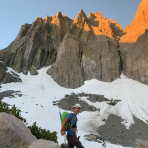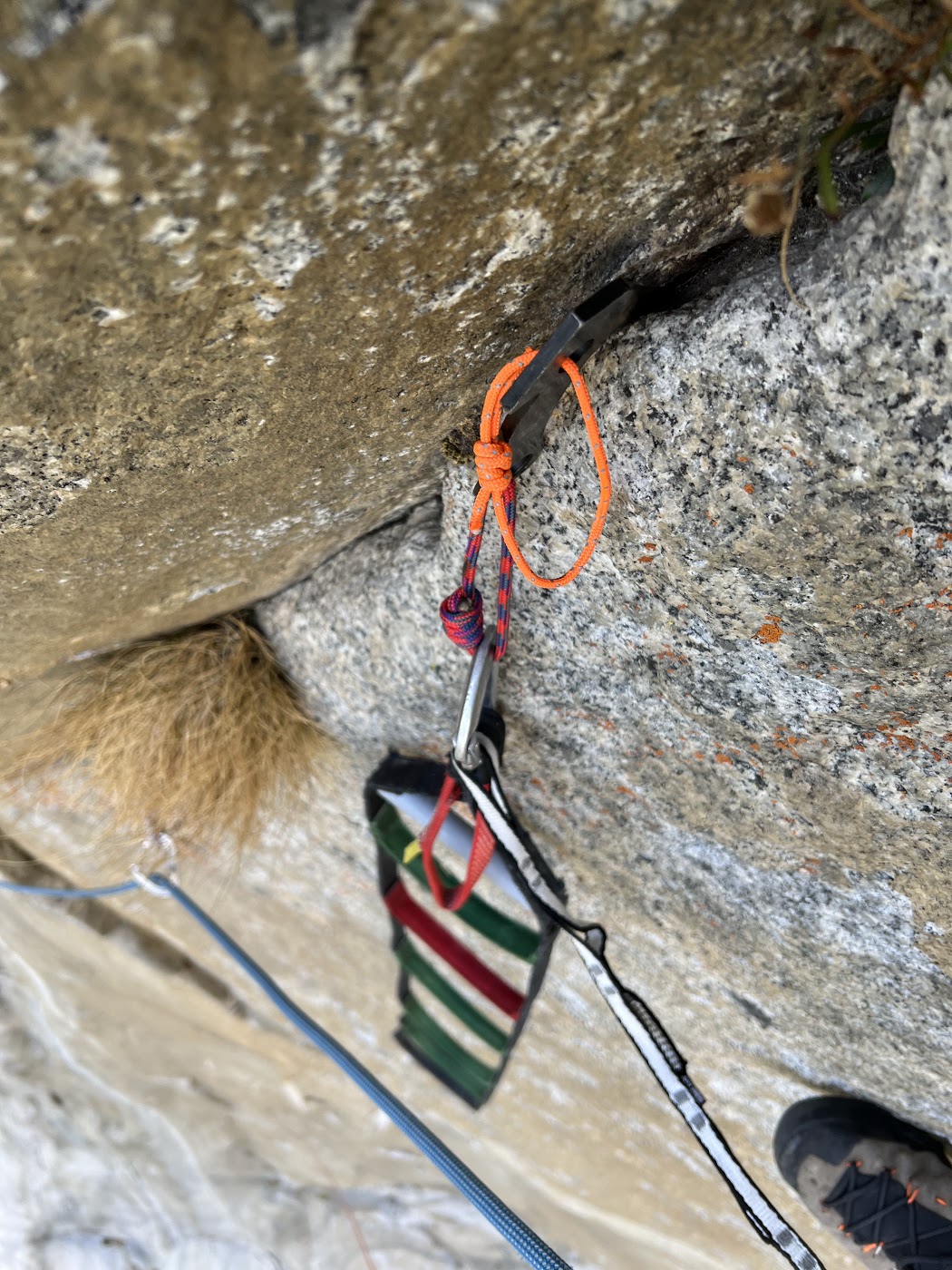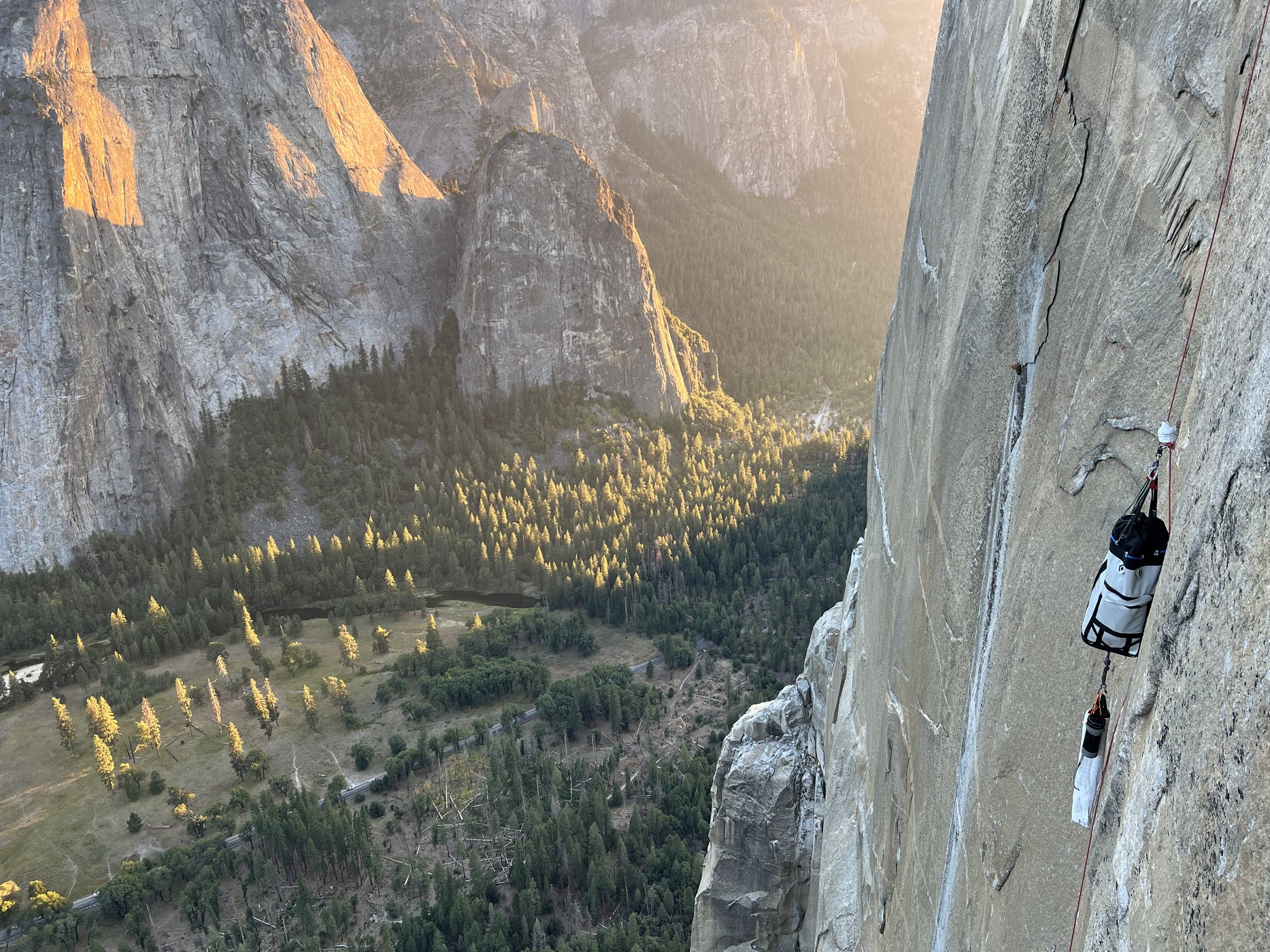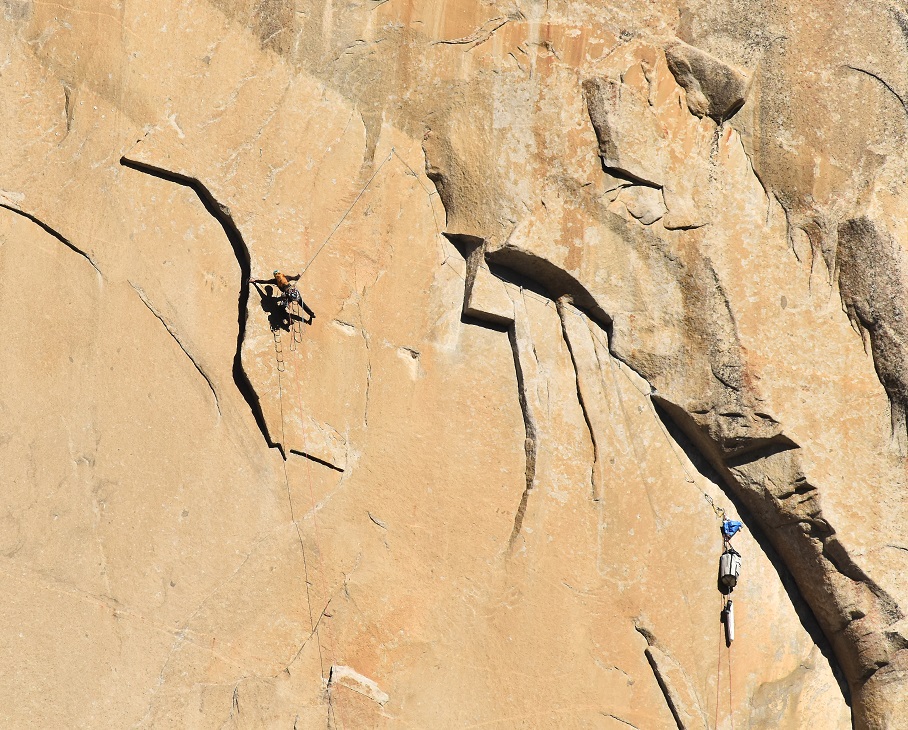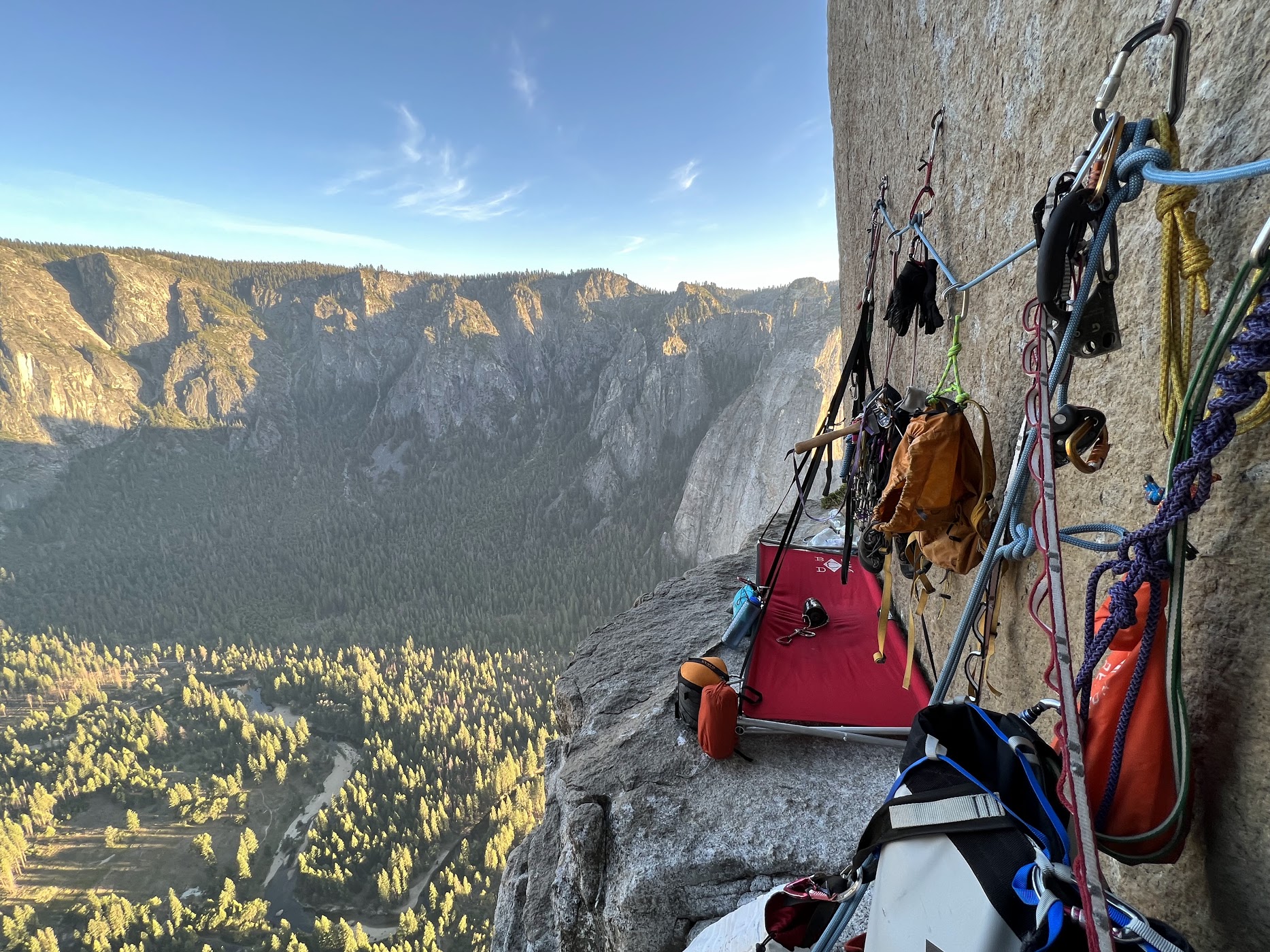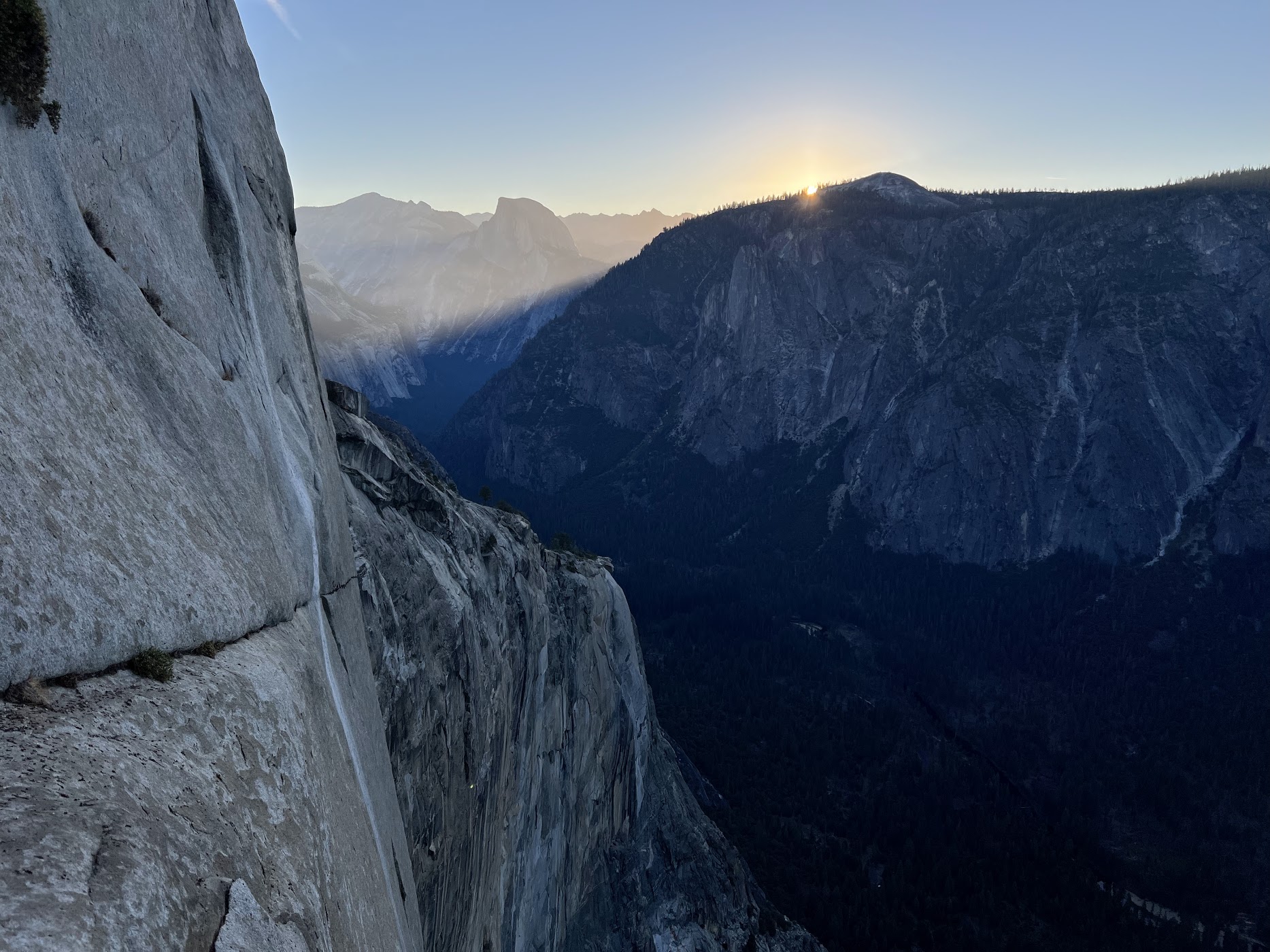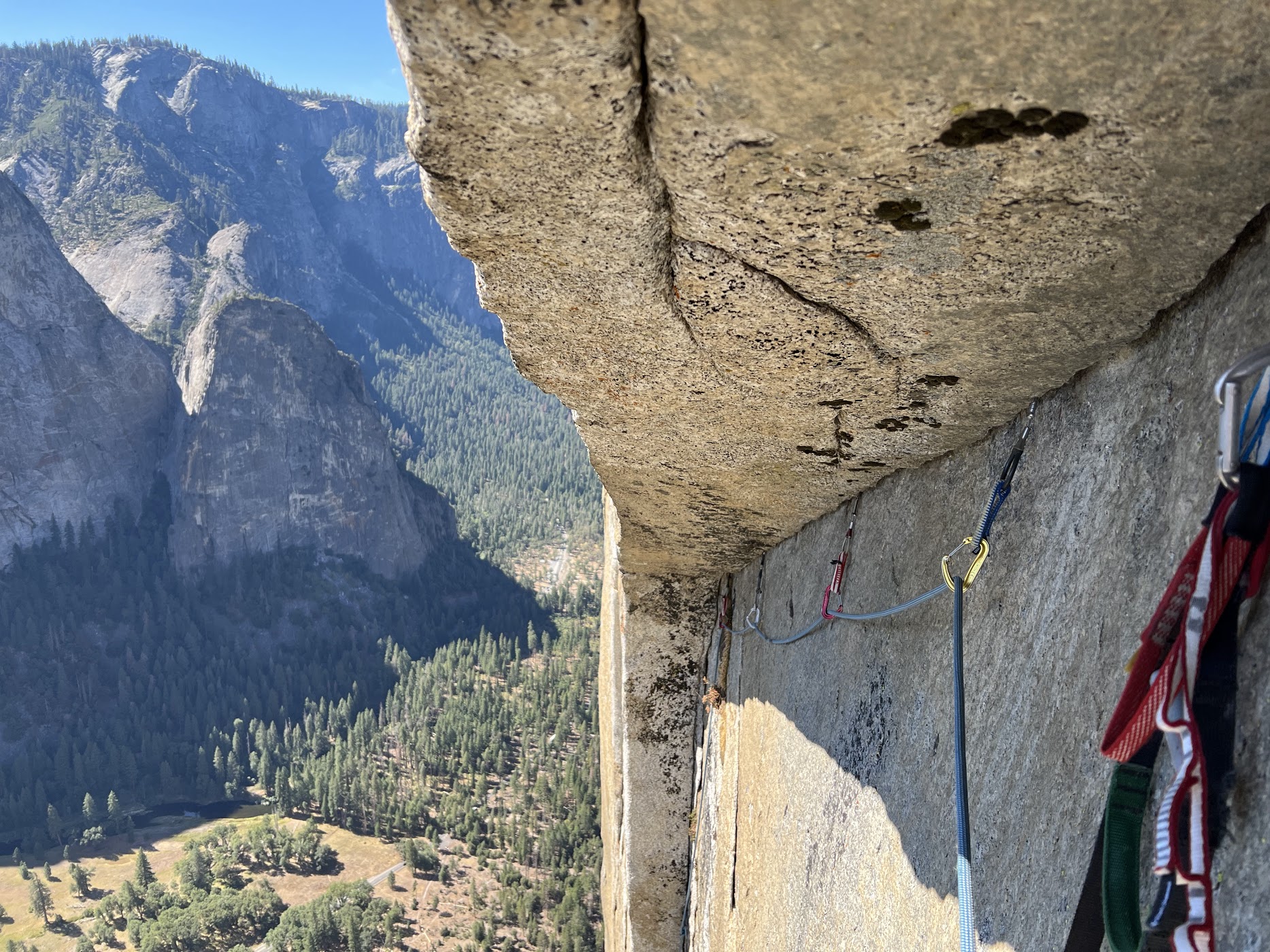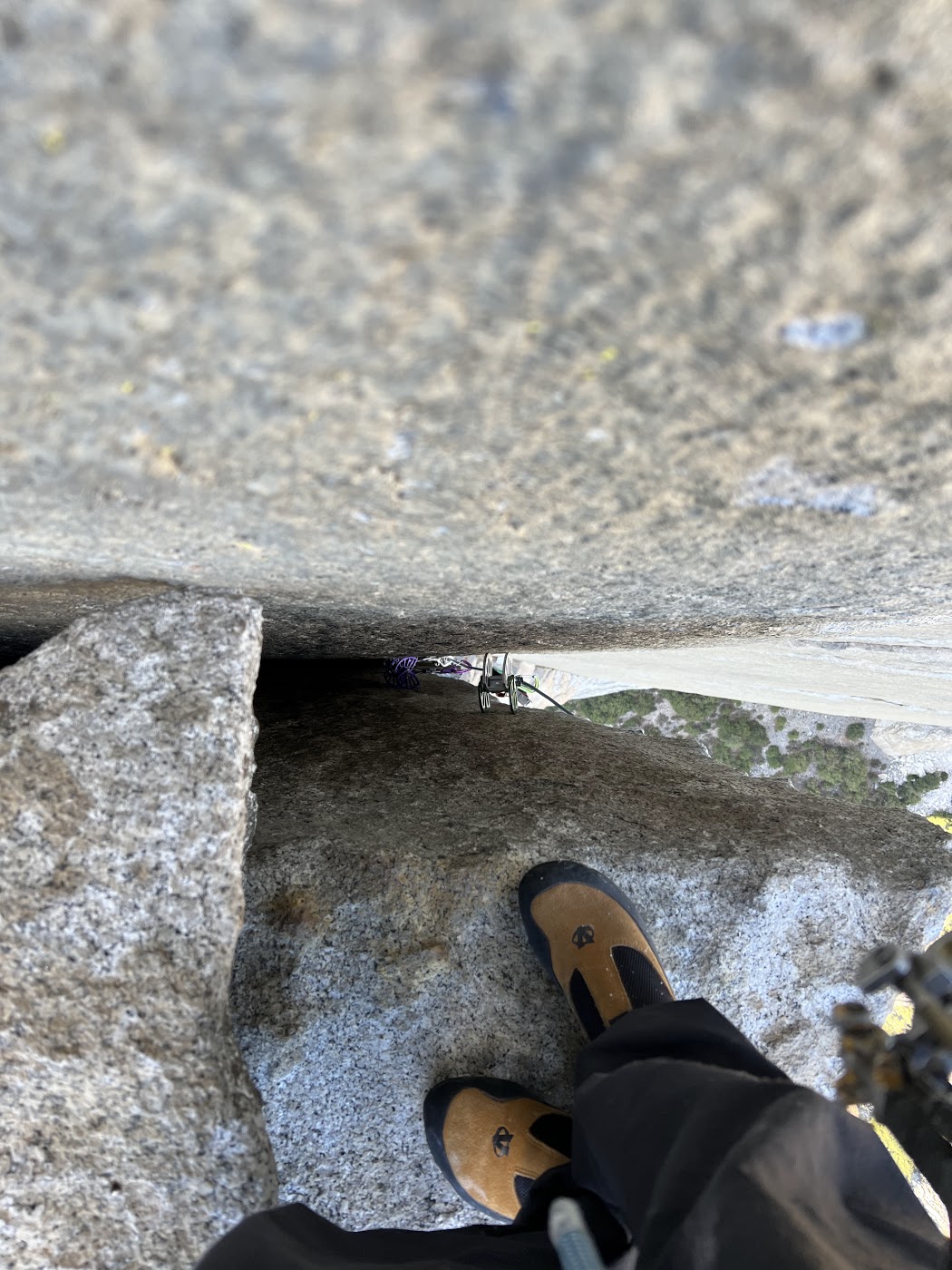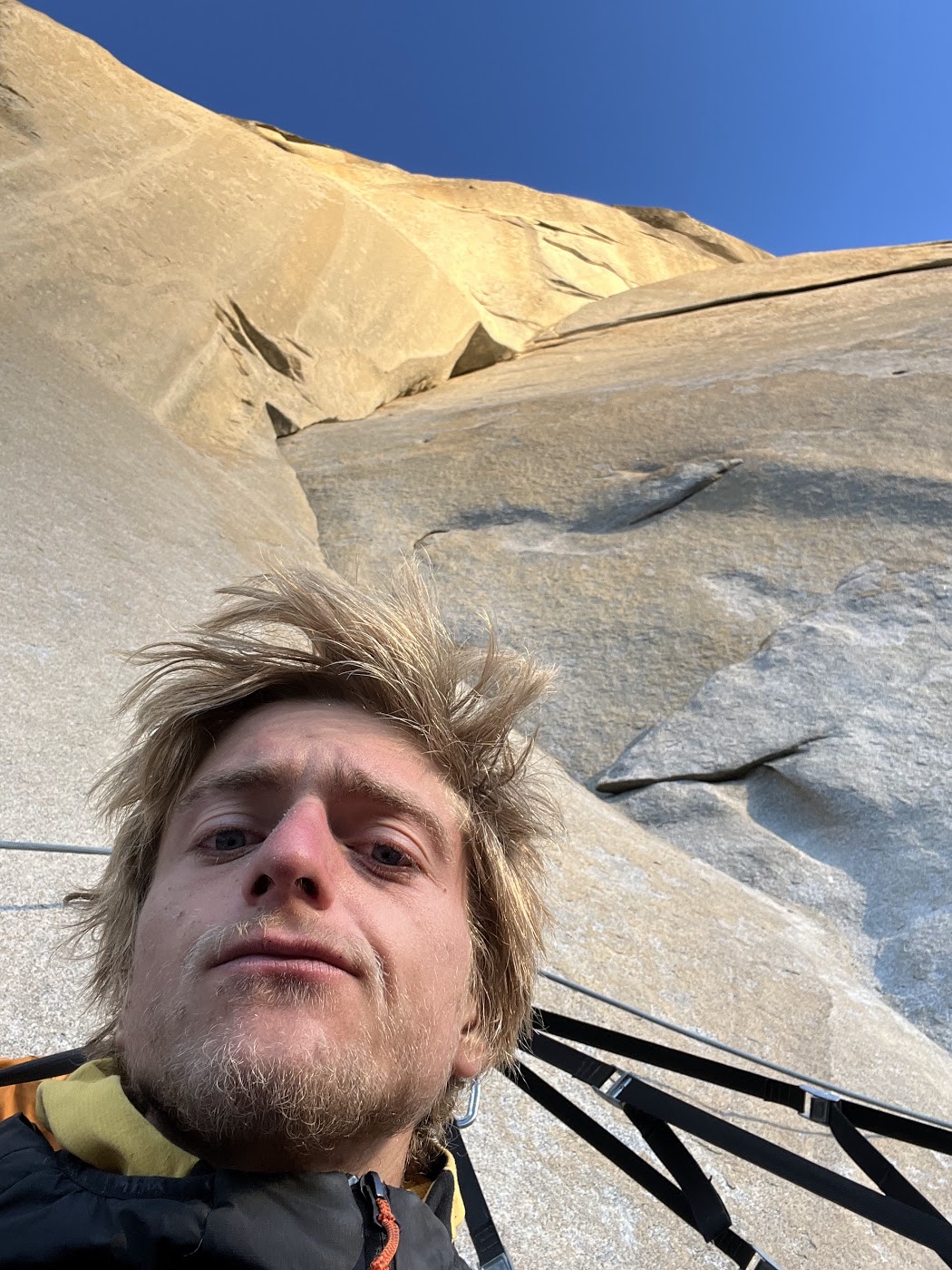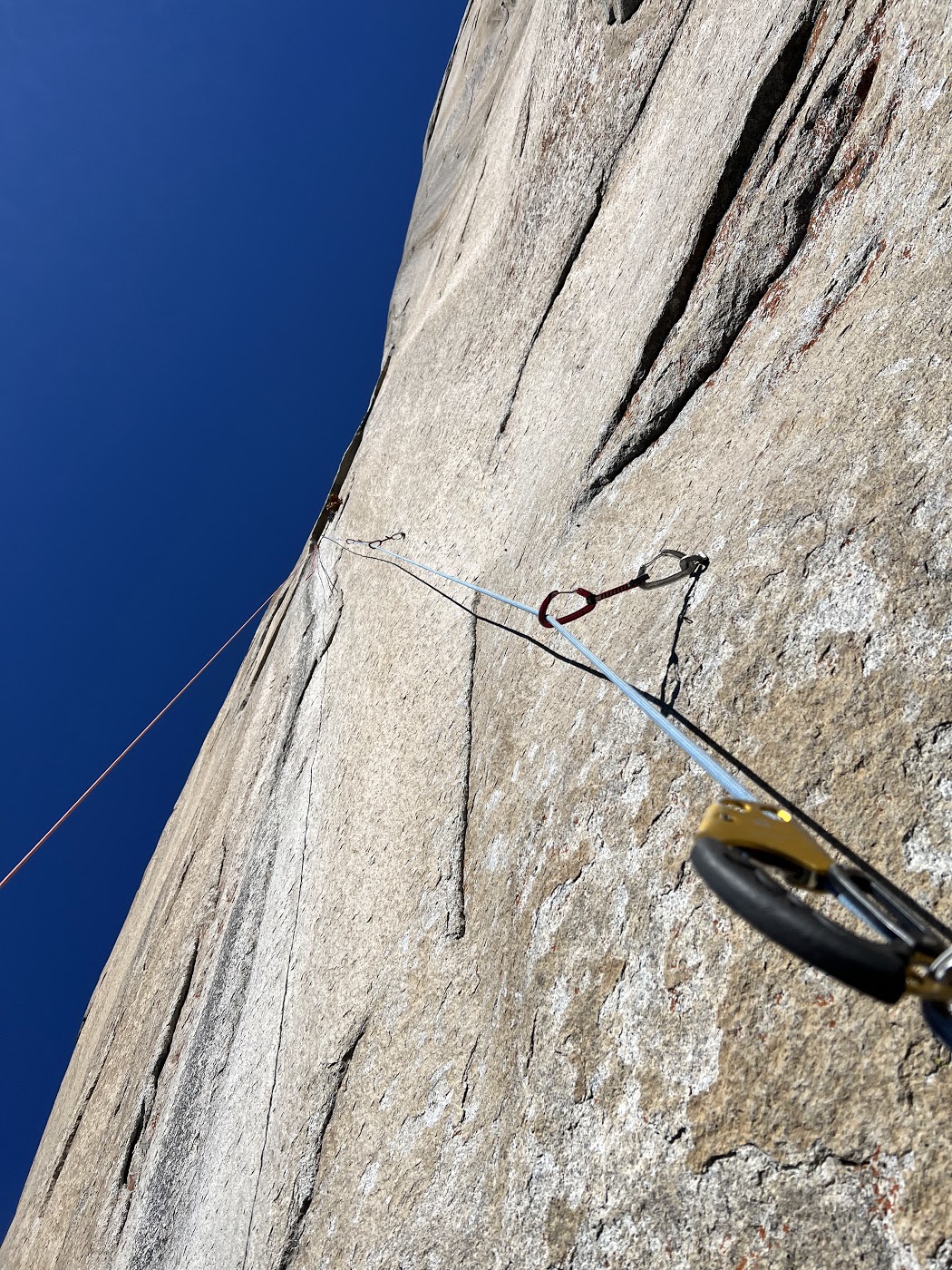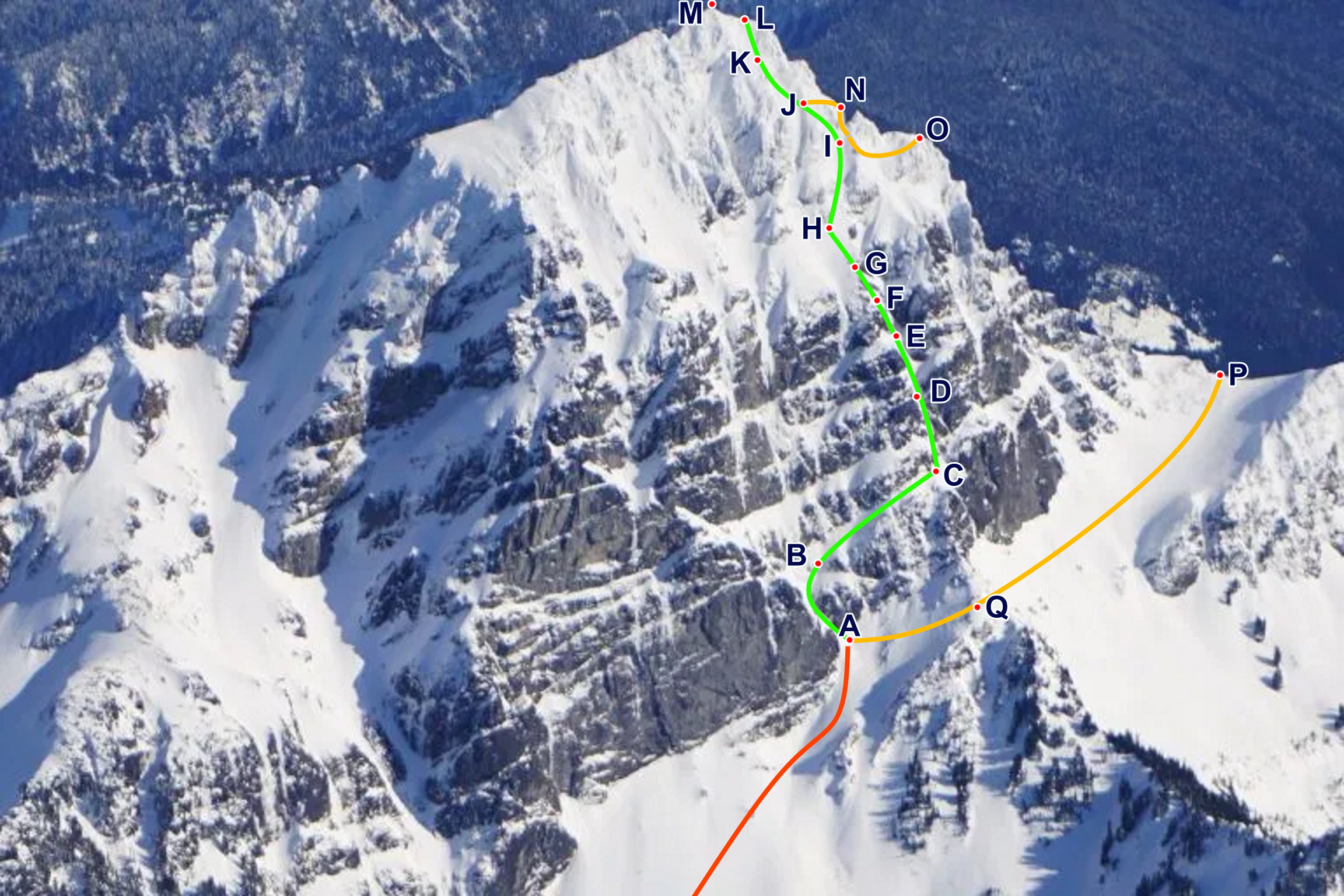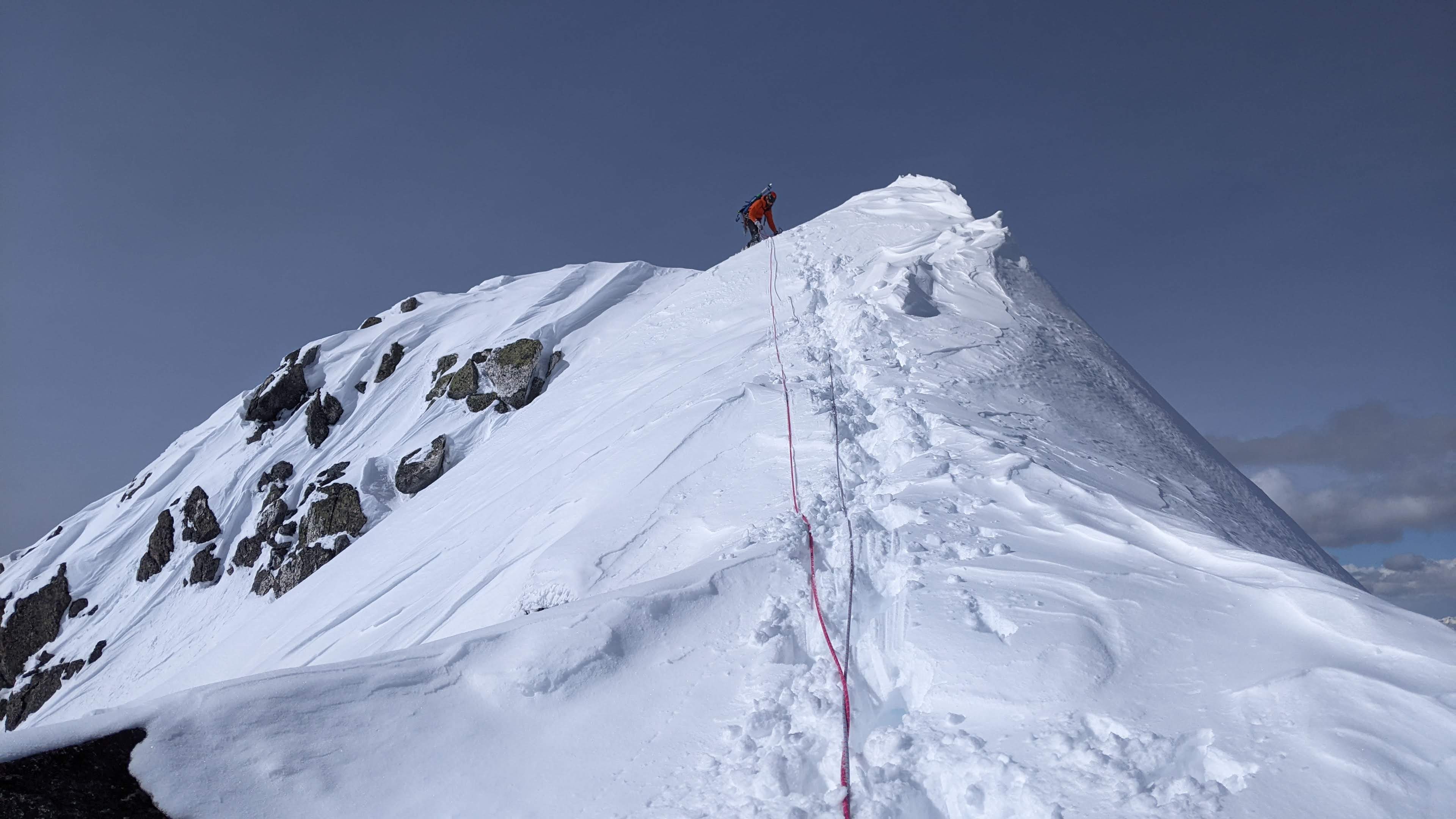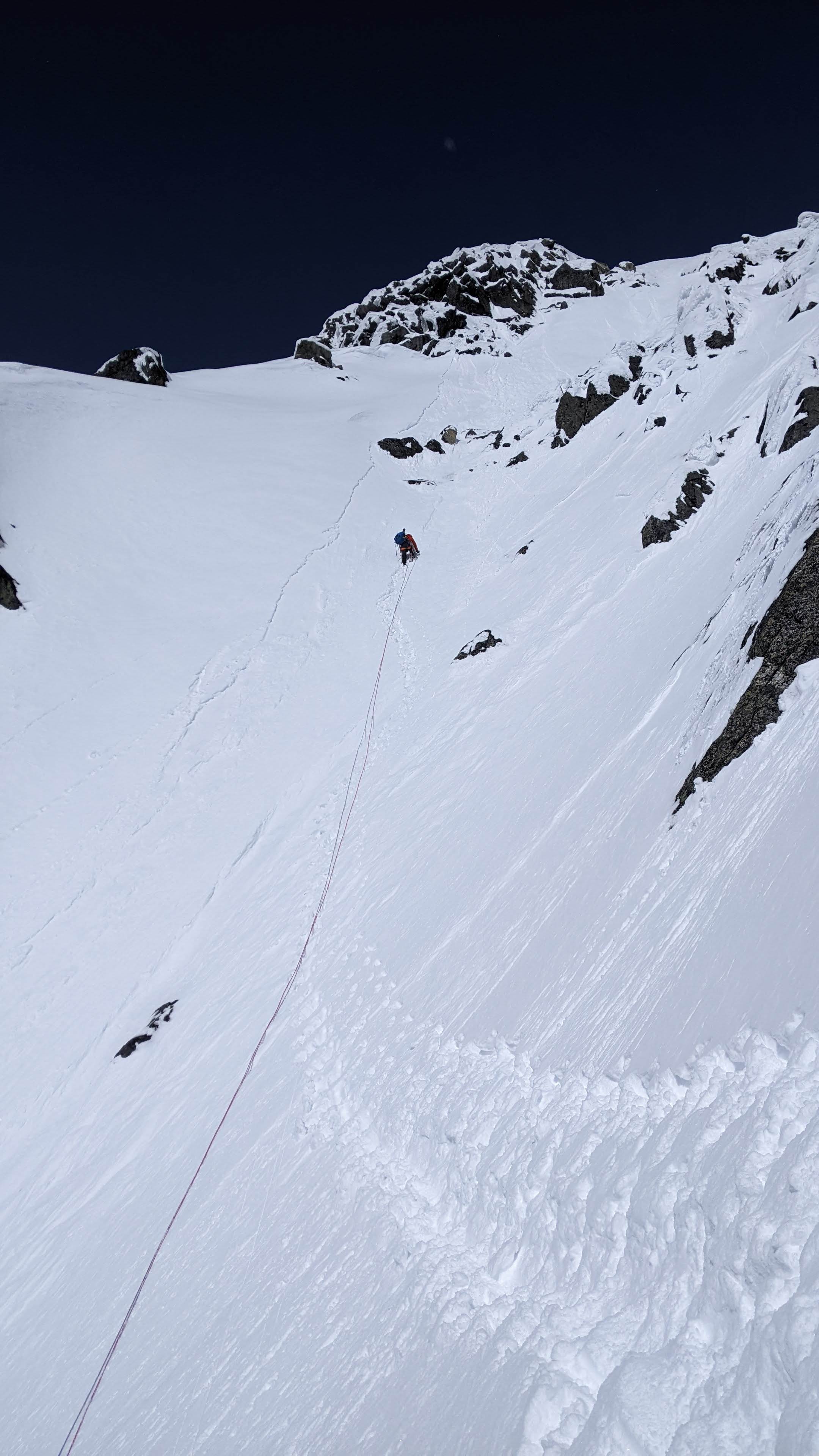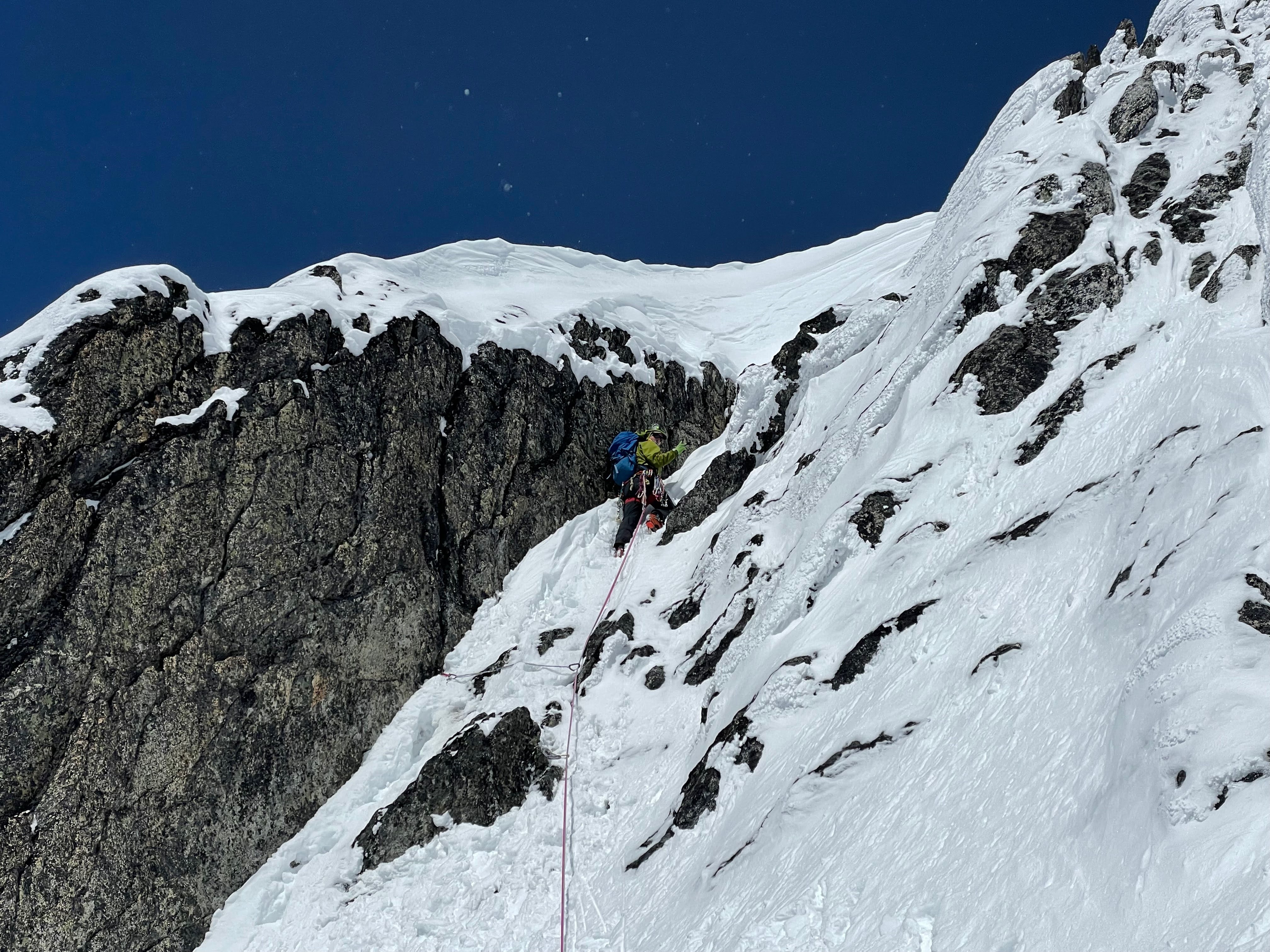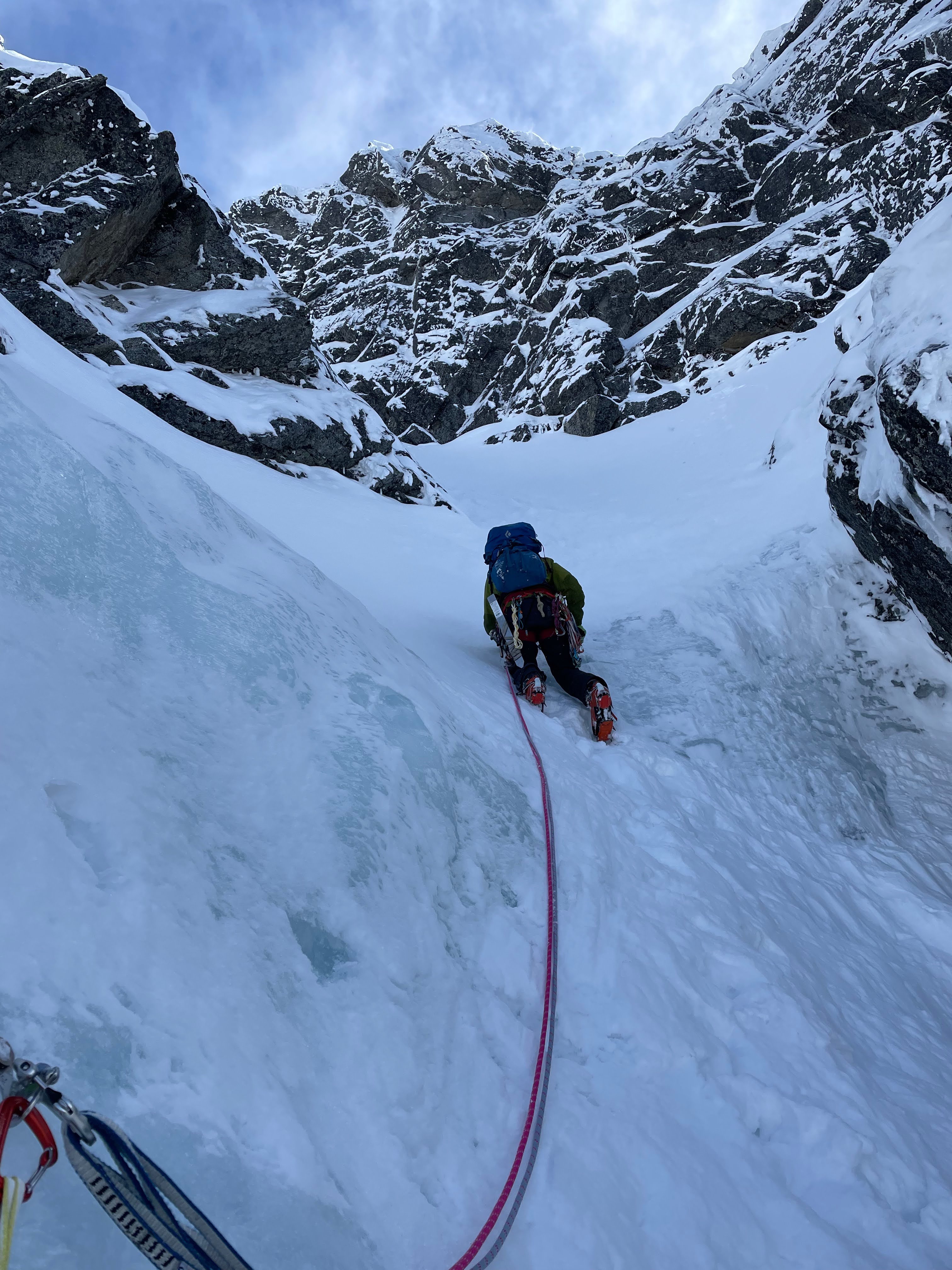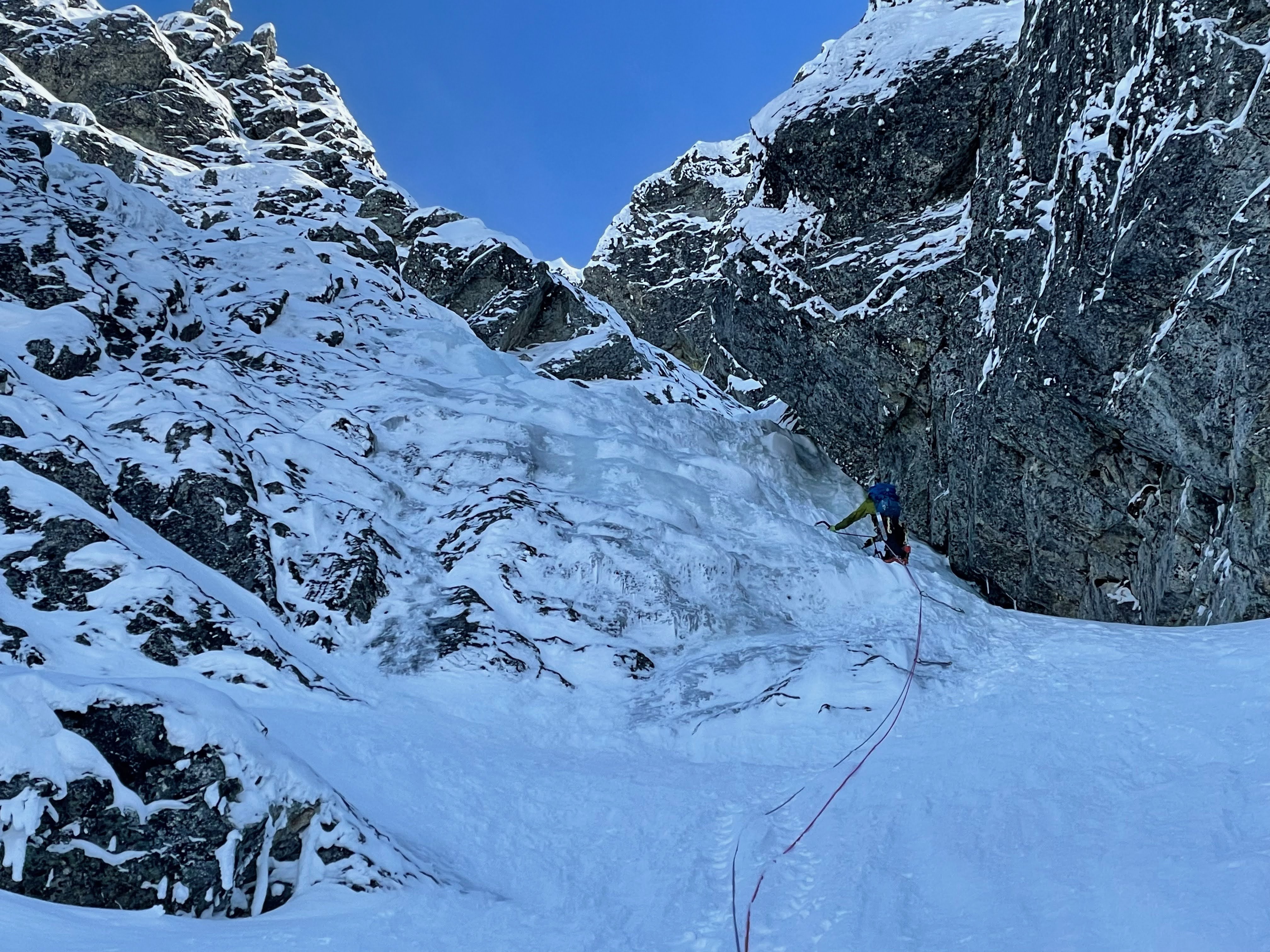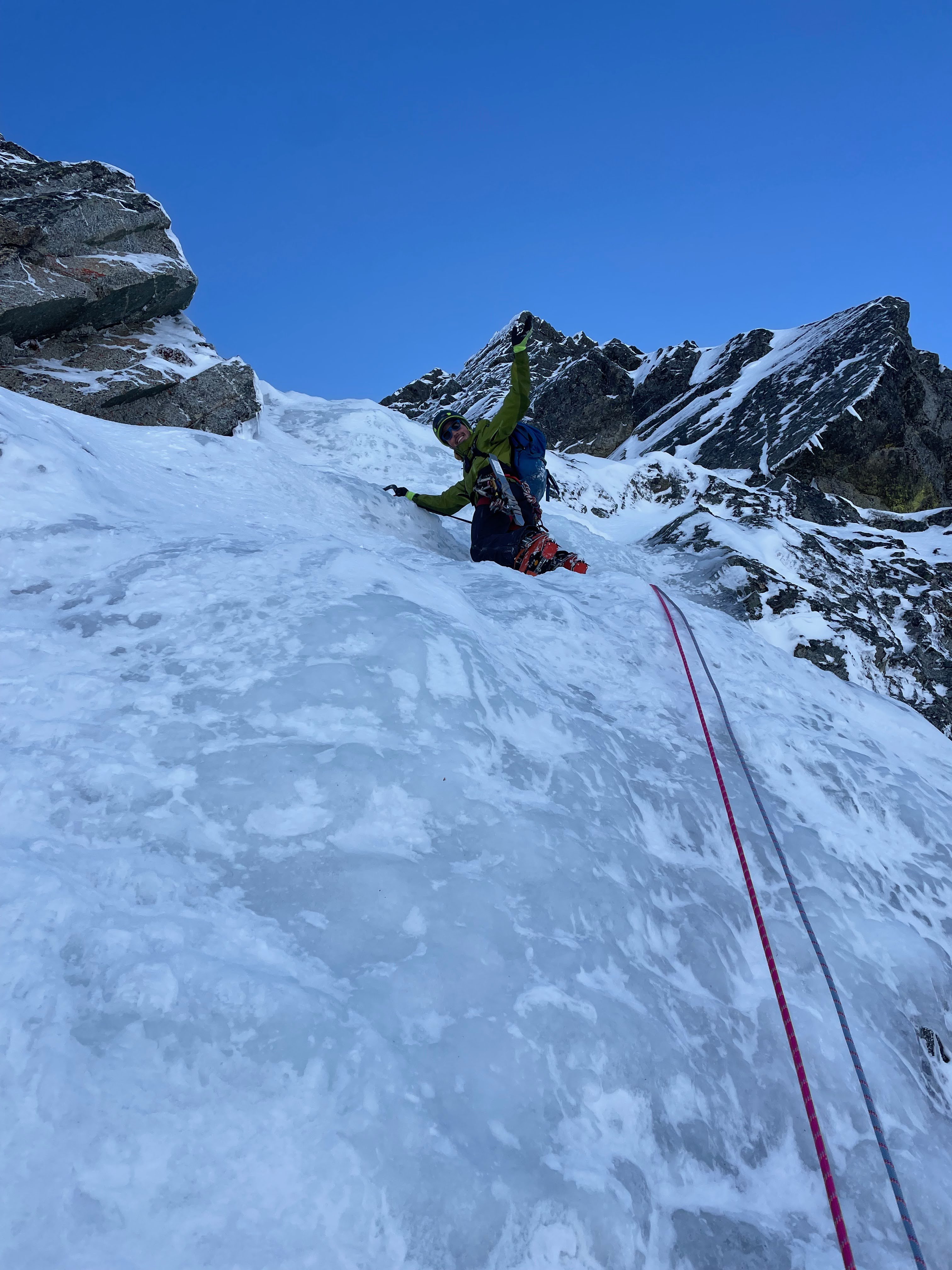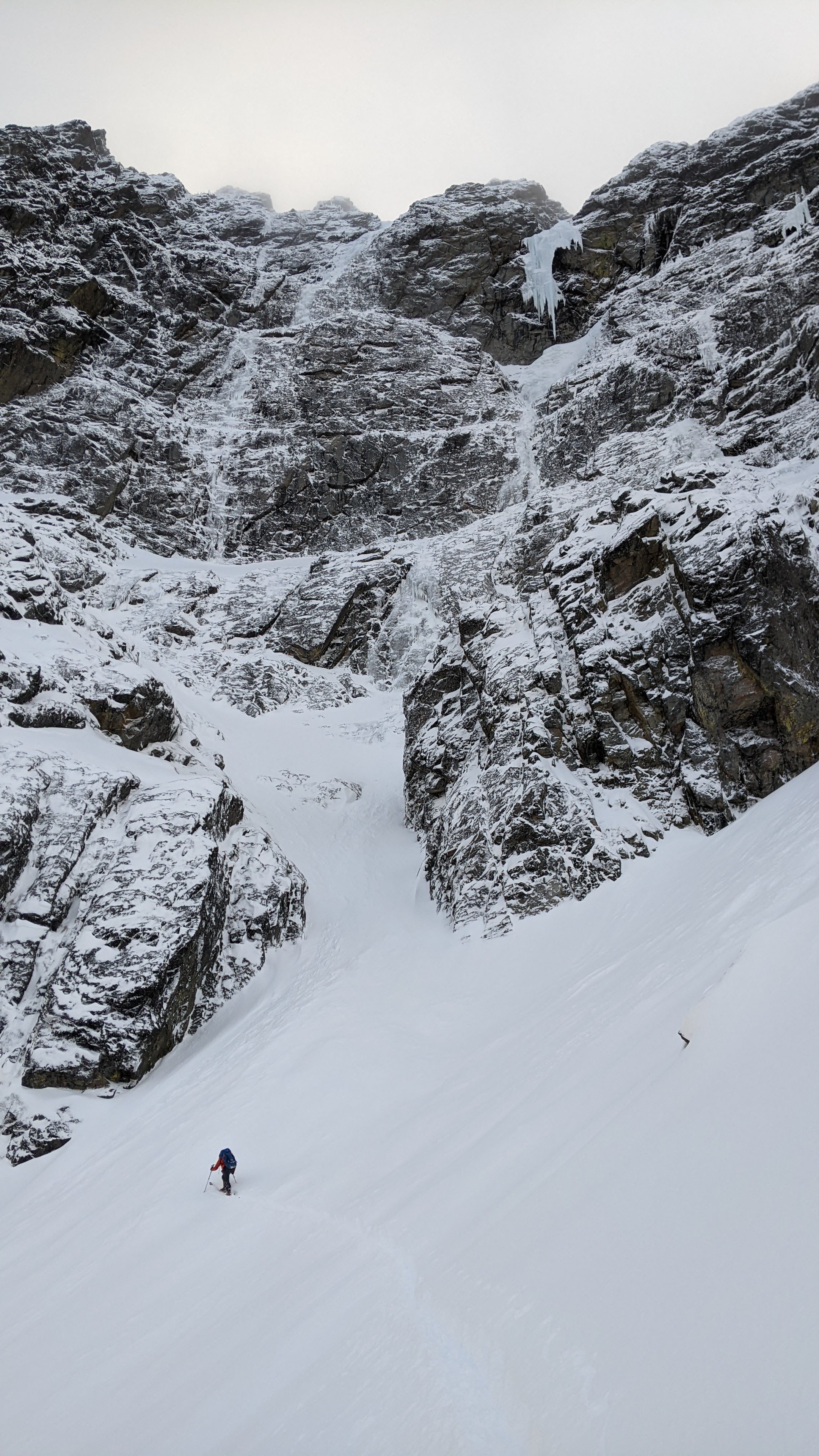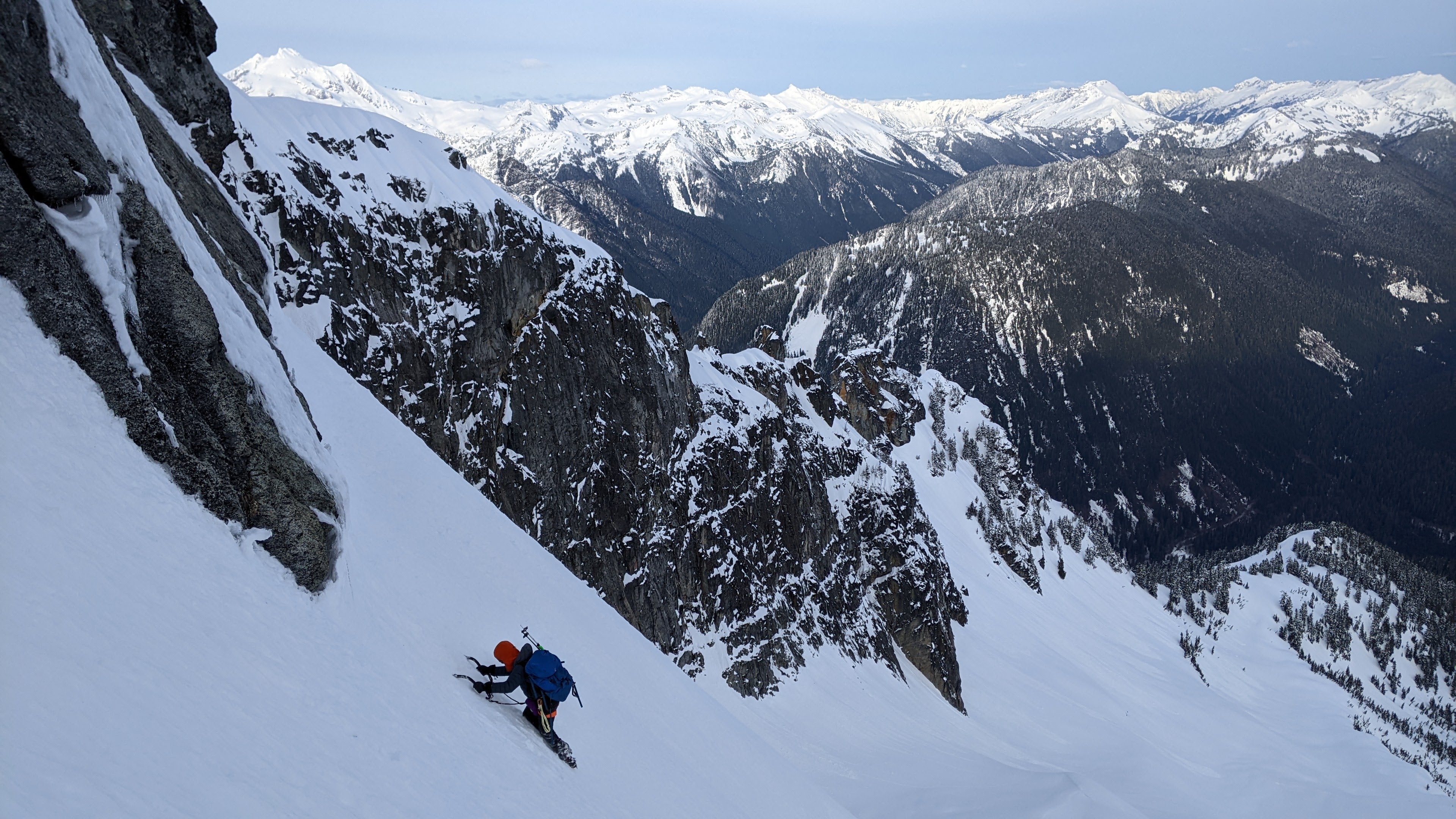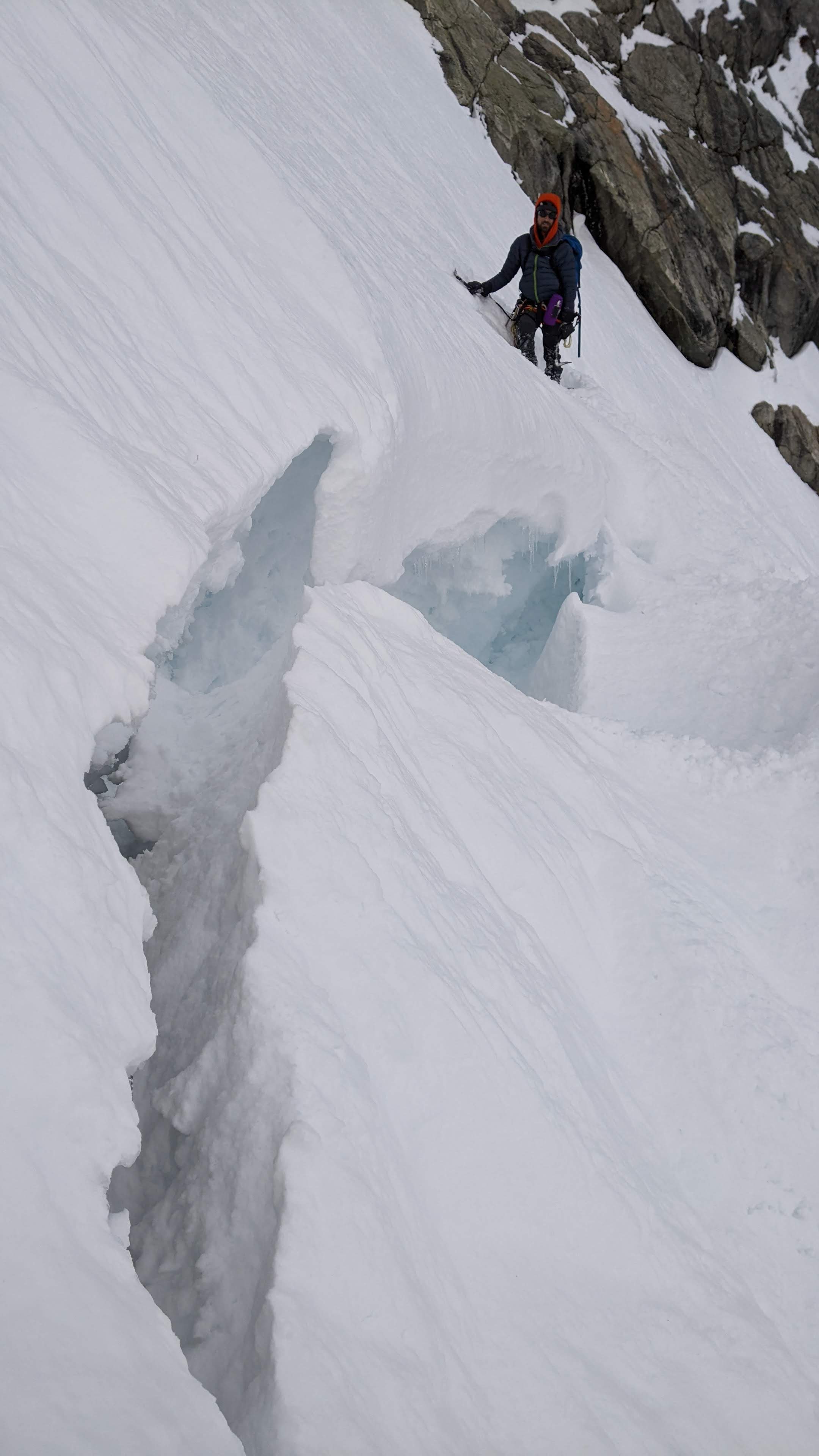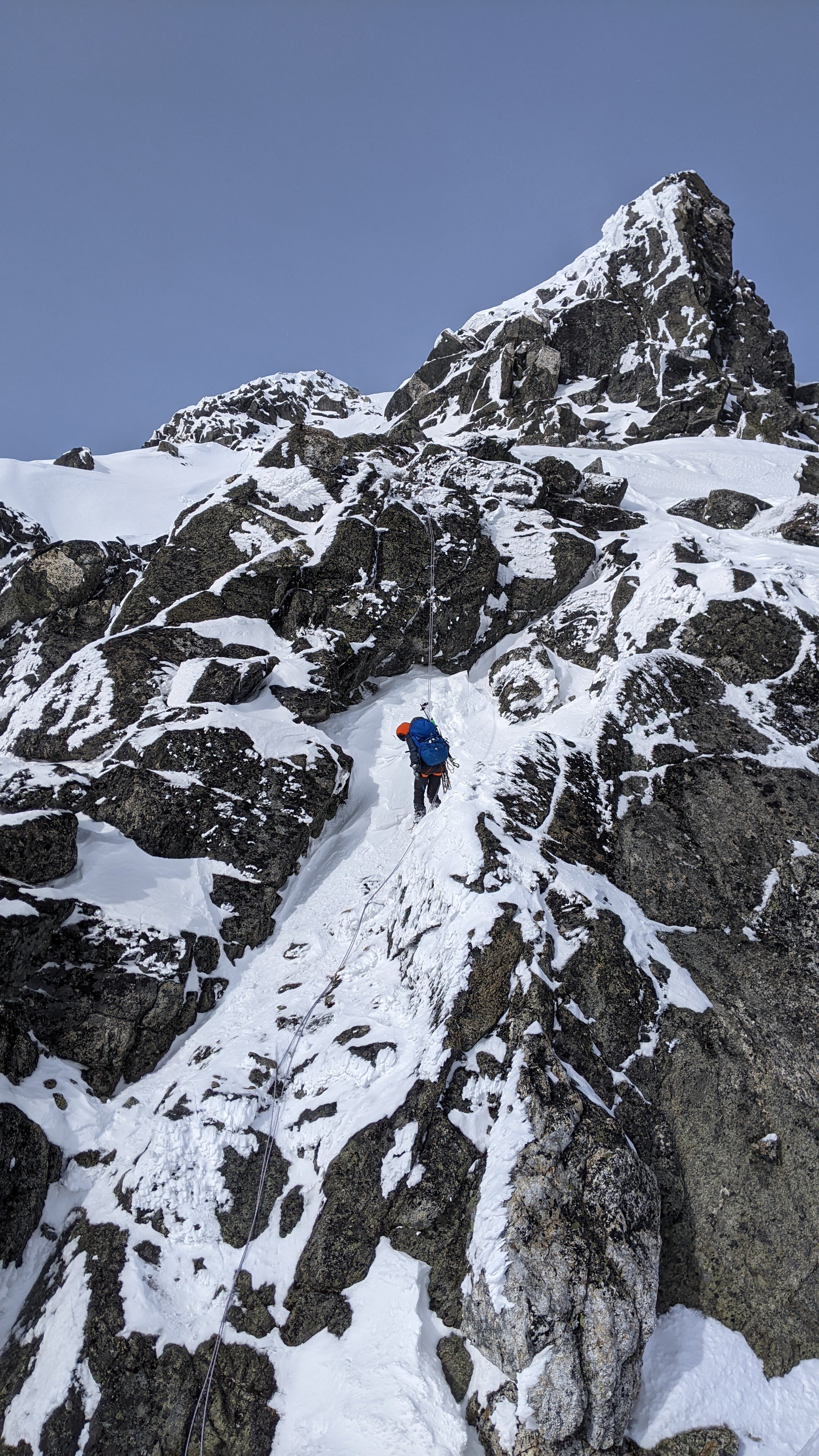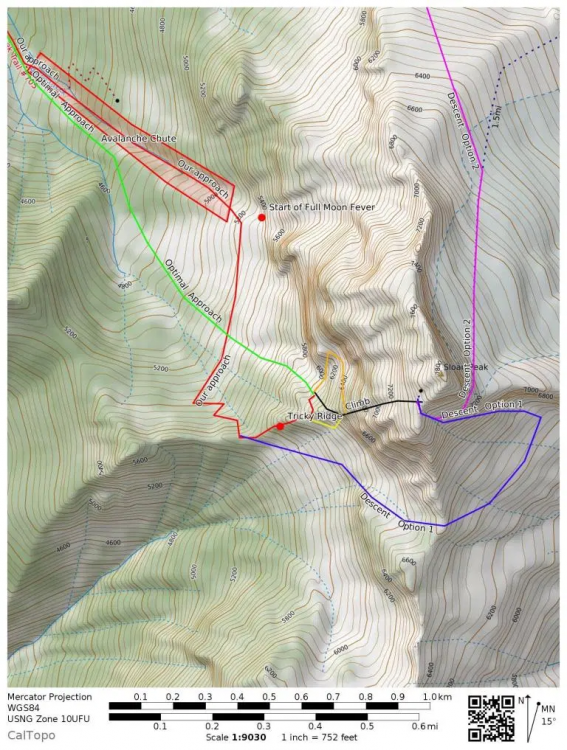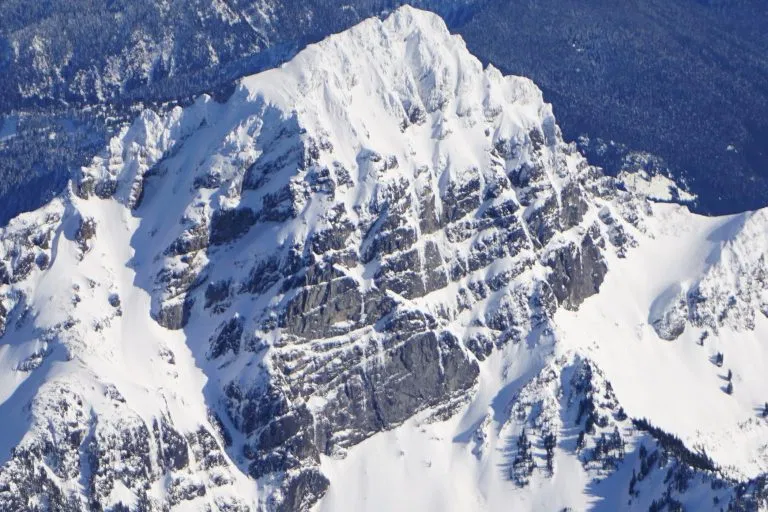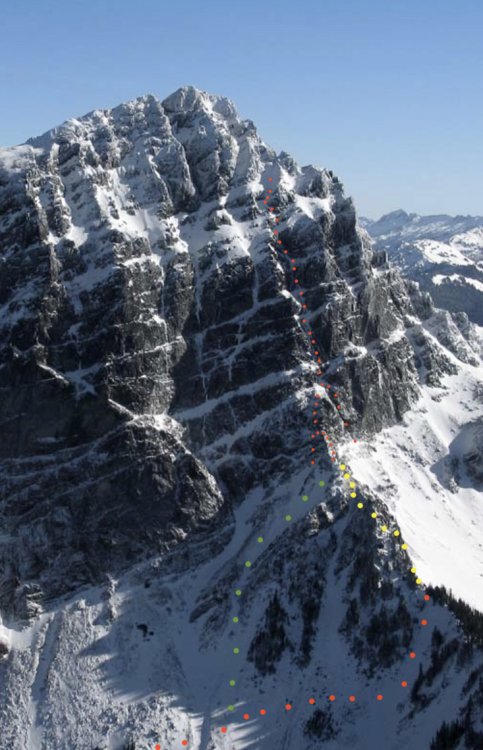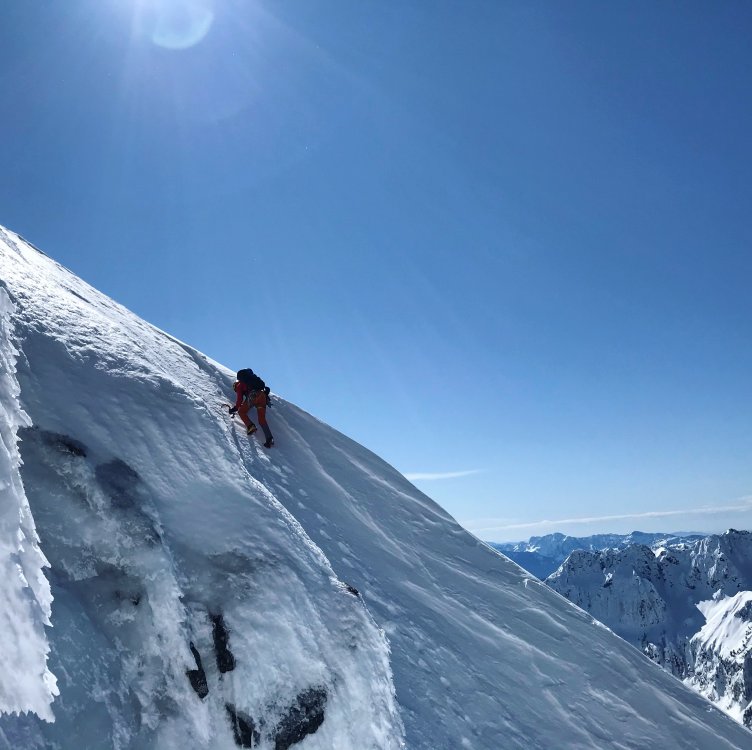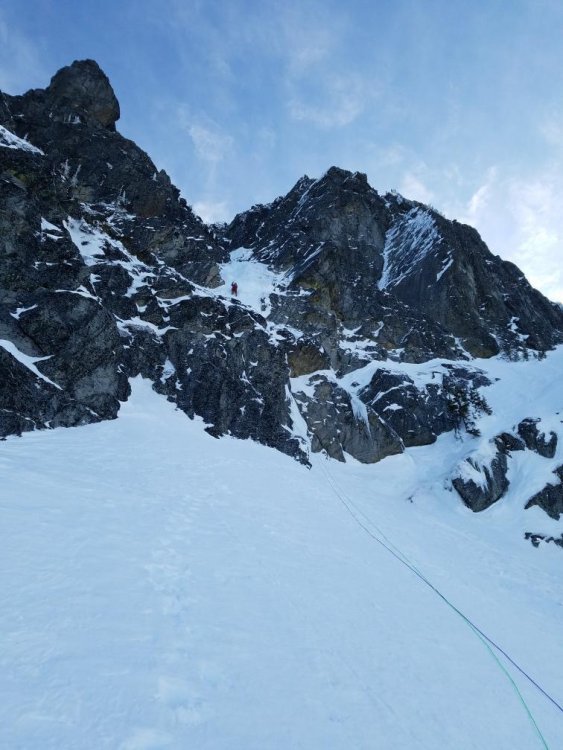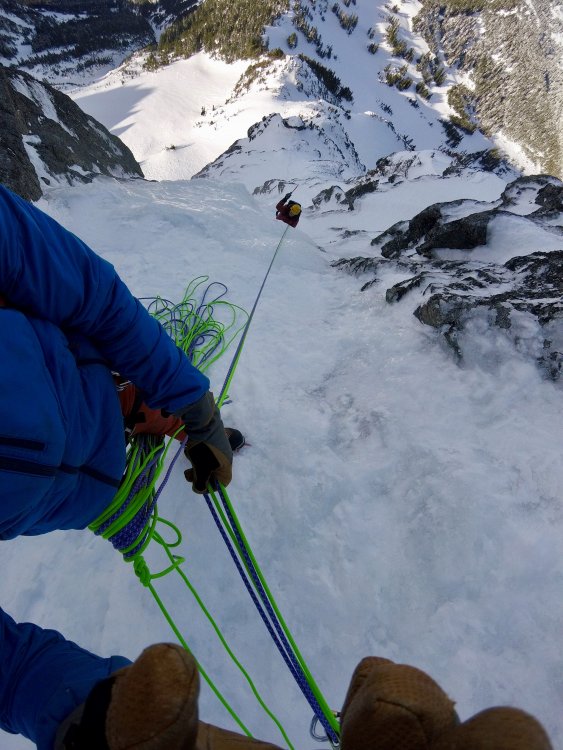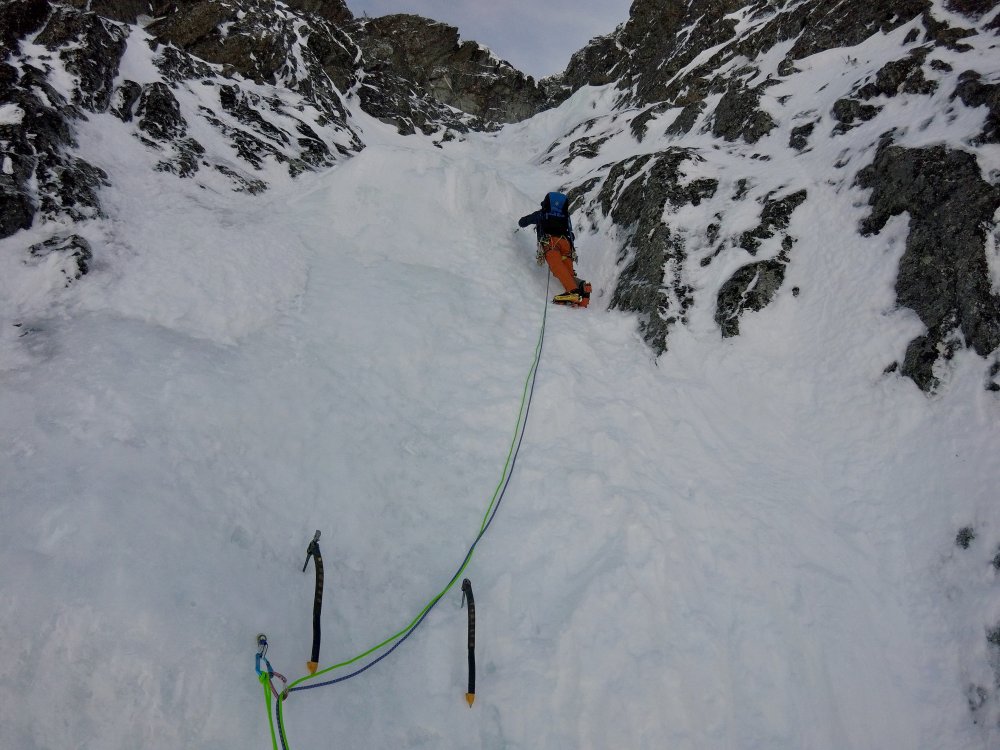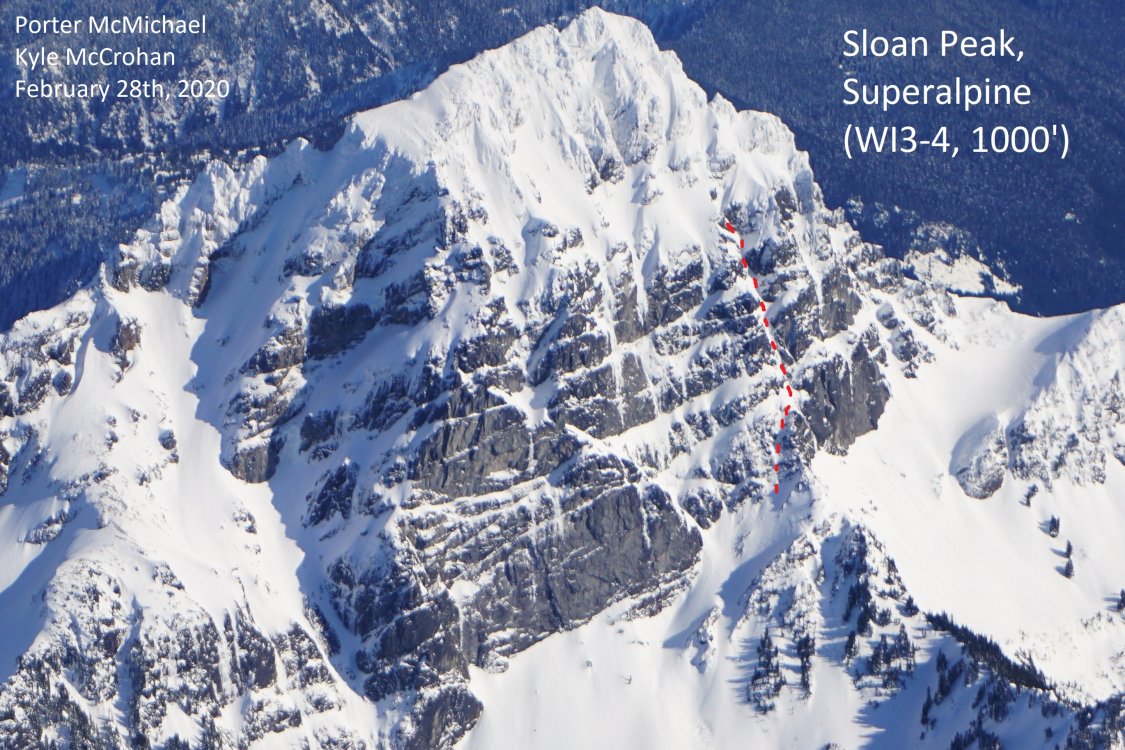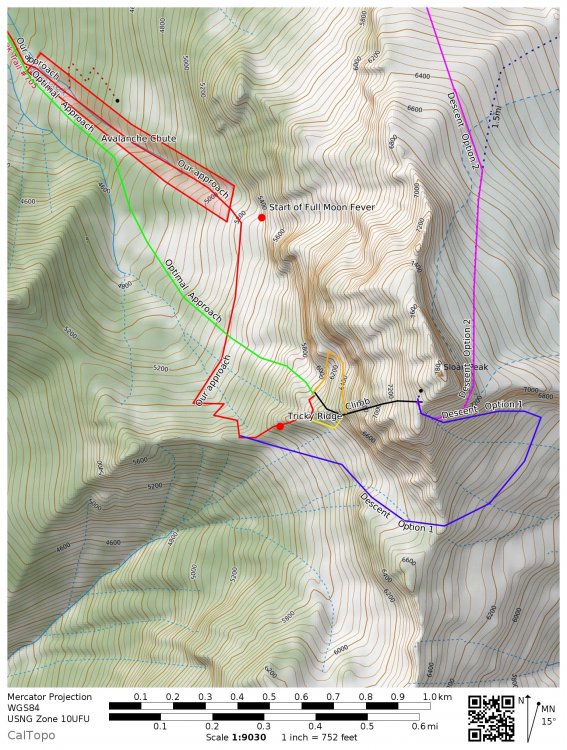Leaderboard
Popular Content
Showing content with the highest reputation on 12/01/22 in all areas
-
Trip: El Cap - Mescalito- Solo Trip Date: 09/30/2022 Trip Report: I figured I'd post a bigwall trip report on here as I have not seen many and thought it would be a fun distraction as we sharpen our ice tools and crampons... Considering I could write a paragraph on the intricacies of each of the 26 pitches, I’m tried to slim things down to the more salient (read: snafu, or scary) moments. Cuz steppin' up in your Aiders and nothing happenin' is rather borin. Especially being alone, the only conversations are those weird ones bouncing around my noggin. Is drytooling really just pumpy aid climbing, or is aid climbing just lazy drytooling? Bing! Then bing! Ah my god that’s a traumatizing thing to hear. My head is spinning, my mouth dry as the Sahara. Why do these seemingly good cams keep ripping? I’ve been getting fried in the sun since sunrise and want, no need, nothing more than to make it up these last few feet to the ledge. Then I can rap down and chug. It takes a few short lifetimes for my heart rate to settle, not from the double cam ripping fall, but from impeding heatstroke. I turn on my headlamp, go back up, place bigger cams in the splitter placements, step up confidently again… only to bing! bing! and whip off again. What the fuck? Anchorage ledge isn’t giving it up easy. At least I finally got to test my lead solo system. Over it, I free climb off to the right and finally onto my bivy ledge for the night. I rap down fast as I can to my bag, dive bombing into my bag to commence the chug. I cough, half of the water comes bursting out, I wince as my wrung-out stomach struggles to accept the now-foreign juice of life. Hauling and set up finally over, I put in a Herculean effort to keep down a few bites of salami before calling it a night. It’s clear that I have barely half enough water to make it another 5 days on this wall that roasts from sunup to sundown. I guess there’s a reason it’s called the Dawn Wall. I fix my lead and haul lines the next day, then have to fix my 6mm tag line to hit terra firma. After a brief pit stop in civilization for burritos, chips, and 5 more gallons of water, I’m back staring up at my 6mm. Time to jug! There’s some slippage- unnerving- but I tie in direct periodically to prevent another, quicker trip to the deck. Back at Anchorage, I’m psyched. I’m armed with all I need for another 6 days. It’s game on. After the previous 24’s tribulations, fixing and reversing the traversing Seagull pitch, now in the shade, is a relaxing endeavor. I eat and drink well that night. One of countless lower-outs of the bags The following day is spent entirely following a single, right leaning crack system. Cleaning is a pain as I have to pull myself back in to every directional piece left in the crack. I forget the haul line and have to rap down to get it in the middle of a lead. The last pitch of the day is long and sustained. I feel strung out, exposed, and alone as the sun sets. There are free climbing chalk ticks that seem to rub in my mediocrity as a free, and aid, “climber.” I close my eyes as I step up on yet another shitty cam, trying to get that horrible bing-bing sound out of my head. A hidden bat hole and shitty heads unlock the day’s finish line. A little over an hour later and I’m sitting in my ledge, which, combined with my headlamp’s short radius, allow me to forget where I am and enjoy my warm mashed potatoes. I’m up early the next morning, arming myself for battle with the Molar traverse. In my apprehension and eagerness to get the pendulum over with, I lower off a bolt with tat and start swinging around. Many tries and many smacks into the wall later, I realize I’m missing something. I foolishly went for it too early! I jug back up, climb another ten feet, then nail the correct penji first try. Tom Evans photo of the Molar Stoked to have that over with, I carry on, only to have my spirits sink immediately as I notice some crackling sound and extra flex in my prosthetic foot. It must have gotten busted on that failed first pendulum. No big deal... if I don’t fall again. I’ve had these feet go flying right off after big whippers, and sure as shit didn’t want to have to watch as my foot sailed down to the base. The damage I carried on carefully the rest of the day, and was able to find some peace and flow while navigating old rivets, heads, and thin cracks on one of the route’s cruxes, pitch 15. Steep rivets, p16 (?) A fun one to reverse (P17) I’d planned the next day to be shorter, giving myself time to chill at the palatial Bismarck ledge, marking the end of the fully hanging bivies on the route. I get up to the ledge early in the afternoon, and quickly realize I’m going to have to fix the Bismarck pitch- a long widening C1 corner culminating in a mandatory layback once your biggest cam no longer fits- to get any semblance of rest that night. I take a deep breath, and without lingering and freaking myself out any further, dispatch it. I let out a holler; the rest of the route will be gravy. I rap back down and enjoy a rare few hours of watching the soft golden light in the valley turn to the fiery colors of sunset. Having skipped dinner the first night, I have a surplus of food, feast like a king and sleep like a baby. Big gulp Best room in the house! Bismarck ledge. More time consuming traverses the following day lead me to two easier pitches, and a surprisingly cruxy penji onto the cool, sloping Ship’s Bow ledge. Camped here for the night, within touch of the summit, I felt a weird sensation of grief. Grief for the death of this experience, a week whose intensity can never be matched on flat ground. But thoughts of pizza kept the grief from getting too strong. A wee bit tired, 3 pitches from the top A 15 foot unprotected lieback off the Ship’s Bow had a similar effect as several cups of coffee, shaking off the latencies of 6 days on the wall. The C1 pitch sounded nice until it turned into a wrestling match reaching for cams deep in the flare. I linked into the penultimate pitch, trying to remember how to climb with bare hands on the cool 5.7 flake traverse. She didn’t give it up easy; the last pitch consists of hand placed beaks and deadheads off the belay and a mega reachy inverted camhook, then finally a cruiser bolt ladder. Final morning sunrise. Mescalito's been on my radar for a while now, as a long, steep, sustained-at-the-grade line up the shining Dawn Wall, a stepping stone into the world of pants-shitting aid. Tracing the route between features back in the Meadow, I felt intensely grateful. Grateful that I'd walked right up to it on my first day in the Valley and gotten that out of my system. But more importantly, for the experience I'd been lucky enough to have up there, and for all the people who'd helped or just shared kind words along the way. Thanks for reading, keep it fun, keep it fast, and if you can, keep it safe, cheers! Gear Notes: standard wall rack, handful of beaks Approach Notes: highly strenuous1 point
-
I have an exciting announcement coming. Details are pretty much ironed out, but I'm a little under the weather right now so I need to get some stuff done before the official announcement, but we will be going with the hybrid model (as the poll was pretty clearly showing most people wanted). I'll share that info soon, but I can tell you this. Its a local climbing related company, not Google Ads. It will be a single sponsorship for a set duration. it will not cover everything, but those have donated are helping build a war chest we can use to improve the site and also make it financially resilient for whatever comes at us in the future. There will be additional cost for development (we can make this site better)...but for now this keeps that fire burning. So I do encourage those that love this site and haven't thrown down to still do so. There may even be a secret forum. thank you for supporting the site.1 point
-
Trip: Central Idaho - many Trip Date: 08/20/2020 Trip Report: Just in case you ever wanted to climb in a pristine valley in the lower 48 that offers hundreds of first ascents on routes hundreds to over over a thousand feet in height. Check out our excellent adventure from August of 2020. I finally finished the report for Tom Lopez's website that he's waited two years for. https://www.idahoaclimbingguide.com/announcements/ship-island-climbing-2020-by-jim-pace/ Gear Notes: Lots of it. Big cams and off width gear handy. Approach Notes: Long. Read the article. Requires a pack string unless you are happy with Denali sized loads.1 point
-
Trip: North Cascades - Sloan Peak - Superalpine (WI3-4, 1000') 04/17/2022 Trip Date: 04/17/2022 Trip Report: Fabien and I climbed Superalpine this past Sunday and topped out on Sloan peak. History: This route was attempted on 02/28/2020 by Kyle and Porter and on 03/15/2020 by Porter and Tavish We left Saturday afternoon, got the car to about 2000ft on FS 4096 just before the snow became continuous. We skinned in with overnight gear and setup camp near a small accessible stream feeding Bedal Creek at 3600ft. Sunday we woke up at 4:00 a.m. and we're breaking trail soon after. We found an easy crossing across the creek at 3950ft and stayed climber's right of the moraine to avoid being in an avy path until we were forced back in the forest. We started seeing the route peeking through the trees and reached the large snow field below the West face of Sloan peak. We approached up to the base of a left leading couloir and stashed the skis there (A). Route: We booted up the couloir, encountered a small step (B) and roped up at (C). (C-D) Short WI4 followed by easier climbing. Careful with rope drag on the rock if the belayer is in the sheltered area before the ice. (D-E) Short ice steps separated by snow. Setup an anchor on the right side at (E) (E-F) Left leaning ice staircase in what looks like a dihedral. (F-G) Snow up to a belay stance in a 5ft step. (G-H) Small ice step then snow up to belay in thin ice. (H-I) Mostly snow with some good ice screw placements. Belayed off a snow anchor. (I-J) 30ft of Easy mixed climbing. Placed cams 0.5 to 1 and made a snow anchor on a wind hardened snow fin: (J-K) Snow bowl. This can have a lot of sluffing and is dangerous if the snow is unstable. We were able to follow a path up that had already sluffed away. It was mostly the top 2in of snow that had fallen the previous night. (K-L) Snow bowl up to a notch on the ridge slightly climbers right (L-M) About 200ft of ridge traverse to the summit. Descent: (J-N) We decided to go down the snow ramp on the other side of the mountain that the corksrew follows for a bit. We aimed for a gendarme (Below the N). From there we did one 30M rappel off and traversed under the gendarme to the corkscrew route (O). By then the East side of Sloan Peak was in the shade and we found good snow to front-point sideways and down a ramp for almost 1000ft. (650ft elevation loss) There was a moat at the bottom which we negotiated skier's right. We had brought two poles up for the next section that involved wallowing across the bottom of the SE face to reach the South ridge of Sloan at 6750ft. (P) From there, we headed back to the W ridge near where the route starts (Q). It doesn't look like it can be traversed easily a first but there's a passage around 6100ft. At this point, we could see our skis and felt like it was in the bag. The chute skied amazingly well but once we reached the snow field, the snow had started to crust making it quite hard to turn. We arrived back at camp at dark pretty tired. Since we both had engagements on Monday, we slept until 4:00 a.m then skied most of the way back and made it home by 11:00 a.m. Overall, this is a fun route when the conditions are there. The snow bowl at the top is probably the most dangerous part of the route when the snow is unstable. It may be possible to bypass by staying on the ridge (Probably from J). Strava GPX Enjoy! Gear Notes: Gear: 11 ice screws (Used all) 8 draws 2 pre-rigged quads 0.3 - 2" cams 1 picket (2 would be better) Small Nuts (Unused) Approach Notes: Drive from Darrington while Bedal pass is closed. High clearance vehicle recommended for FS 40961 point
-
Trip: Sloan Peak - Superalpine Trip Date: 03/15/2020 Trip Report: This past Sunday, Tavish and I climbed Superalpine on the west face of Sloan. After the incident last time I wanted to get back and climb the route to the top. We didn't quite tap the top due to wind slabs on the upper face. I'm going to mix up the order of this one and put all the route details first so those who are looking at climbing the route can use this page for reference. Kyle also has a great page about our first climb of this route with excellent photos and maps. https://climberkyle.com/2020/02/28/fa-sloan-peak-superalpine-wi3-4-1000/ Approach: Both times I've climbed this route we parked at the spot where 4096 merges from Mountain Loop Highway. 4096 had deadfall and snow which made it undrivable but if you can drive up a bit before there's too much snow or deadfall then that will cut off some distance. Follow the road (easy skinning or walking) to where the Bedal Basin trail forks off to the left. Take this trail through the trees for a few miles to where a slide path up to the left becomes obvious. This slide path leads to the base of Full Moon Fever. Skinning up this path is straight forward and takes you to the base of the West Face. A long traverse to the south will bring you to a ridge that leads to Superalpine. Here, options exist. Assuming you're on skis, I recommend leaving them at the base of the route and descending the route. There is also the option of descending the corkscrew route and wrapping around the south side to meet that ridge (it would be heinous to boot) or carry skis and descend the glacier to the North East that will eventually allow you to meet back up with road 4096. The ridge can be tricky. Once you decide your strategy, the ridge will still be engaging. It's not scary, just steep with deep snow. The Route: However you opt to get to the base of the route, you are first presented with 2 (or 3) options for pitch 1 to access the couloir itself. The first time Kyle and I climbed a WI4 step on the climbers left. It was vertical for 2-3 body lengths and fairly thin. This past time Tavish and I thought it looked even thinner so we scrambled the ridge further up (M2-3) then did one pitch that wrapped around to the second step of the first pitch and ended at the same place. Either way, you need to get to the bench at the base of the obvious weakness in the wall. A third option may exist to the climbers right of the ridge. Perhaps it's even easier (if so it would bring down the grade of the route to Wi 3-3+). Pitch 2: This money pitch leaves from the bench and provides a full 60m of steep sustained Wi3. Protection was generally good for this pitch. Make sure to go a full 60m if you are planning on simul-climbing higher on the route. Pitch 3: This middle section of the route was lower angle and about half snow and half low angle ice (wi2) for us. We found good pro every hundred feet or so. This section makes a lot of sense to simul-climb. Both times we did a 100-150m block. There was good ice at the top of a chimney-like feature, or, if you've saved enough screws, the next step had good ice on the right for us. Utilize rock gear to conserve screws through this section. Pitch 4: From the end of the last pitch, this is the last section before exiting to the face. Depending on where you belayed, you’ll either have a steep snow slope to a curtain or be climbing right onto the curtain. This curtain is where Kyle fell on our first attempt. This past time, I found a sub-vertical weakness (wi3/3+) on the right side of the curtain (not the smear further right which provides a good belay). However, when Kyle fell, there was spin drift blasting the section I climbed so he went further left where it is more like Wi4 with a heinous top out with sugar snow and hollow ice over sugar. I found good protection in the weakness but Kyle didn’t find good pro further left. Approach this pitch with caution, don't be afraid to back down. I found a great ice screw belay on the right about 20ft above the curtain. Another option to avoid this pitch if it is unclimbable is a snow ramp to the left. See photos to spot this snow ramp. This would avoid all of the upper curtain and put you on the upper face, however, it is steep and exposed and unprotectable. As with the whole route, use your judgment. This isn't just alpine climbing…. It's Superalpine! The steeps above: Look at photos of the big face above the route (and have them with you). There are a variety of options that exist to climb this large feature (700 vertical feet). When I climbed it most recently, we found deep unconsolidated snow, wind slabs, alpine ice, and rime features. This section is shared with the corkscrew route and is very committing. There are a lot of ways to get lost, falling is never an option and it's mostly unprotectable. Very reminiscent of the upper slopes of the Cosley-Houston on Colfax. If the snow is consolidated and secure, it would be a total blast to climb, if not, then maybe it should be avoided. On the first attempt we bailed due to injury, and on the second attempt, we bailed halfway up the face, after converging with the corkscrew route, due to thick cohesive wind slabs. The descent: Descending should be straight forward. Downclimb the steep snow, and rap the route. We took 5 or 6 raps to get down the whole route each time. There is no down climbing once you’re back down to the top of the curtain pitch. Each rap is a full 60m and ends at good ice, providing plentiful V-thread options. Other descent options exist as mentioned in the approach section but this option is quick and straightforward. Ski out the way you skinned in. Rack: In the conditions we found, 8 or 9 screws including a 10cm or two makes sense. Rock pro isn’t super plentiful and there is a lot of ice so we took 4 cams, 4 nuts, and a pin or two. This is probably what I would recommend. If you try it earlier, then beef up the rock gear side of things, the rock is quite solid in places. Hopefully, people get out and climb this thing! It is like the NW Ice Couloir on Eldorado but way bigger. Lots of ice, great setting, not too heinous of an approach. Tavish and I did 17hrs c2c. We were not rushing but we weren't lollygagging either and we were ~350ft from the top. Kyle made this topo with the options. My opinion remains to descend the route. Good to know your options. Here is a topo I made on a John Scurlock photo of Sloan from February 2005 (low snow/ice year). Red dots show the route (note the three options for the first pitch). Yellow is the tricky ridge. Green is an approach that could avoid the tricky ridge. Aerial photo from Shane in February 2020. The ramp to avoid the curtain is obvious in this photo. Now, onto the story from yesterday. Tavish picked me up at midnight in Bellingham after an hour or two of restless sleep. We drove through Darrington and onto Mountain Loop. His Prius handled the road like a champ and by around 2 am we were packed up and walking up the road. I was in crocs since I forgot running shoes, they did the trick (they're the next big thing in climbing for sure! Breathable, waterproof, sorta, ultralight, cheap, comfy, and climb 5.12 with ease.) Anyway, we started skinning after about a half-mile and cruised up to the Bedal Basin Trail in about 90 minutes. There was a fresh half-inch of snow showing bobcat (?) tracks following the existing impression of skin track. From there we encountered a mix of booting and skinning in the trees, mostly skinning but lots of skis on skis off. There was a slight impression of the existing skin track (probably from Michael Telstad, thanks!) that we followed and got us where we wanted to go. We skinned up the slide path below Full Moon Fever and the snow transitioned from a few inches on a crust to a nasty wind board. I knew it would be bad since I skied the white salmon the day before but I was hoping to find wind scraped, not wind loaded terrain on this aspect since it would be indicative of the upper slopes. We continued to the tricky ridge as it got light, left our skis there and put on actual boots (last time I climbed in ski boots, this was better). While we transitioned, we got pretty cold. We brought big puffys since the freezing level was 0ft and it was probably 5 or 10 degrees. Fortunately, the sky was clear and there wasn't a breath of wind. We hurried through that transition and started booting up the ridge in all our clothes. Bobcat? Not a dog, not very big... It was slow going and I punched through to my hips or deeper at several points. We were toasty warm by the time we were at the base of the route. The left-hand variation Kyle and I took last time looked much thinner so we opted to climb the ridge above us and see if that would go. We soloed up easy rock to an impassable wall. Luckily we could traverse left and rejoin the first pitch from last time. Tavish led that and gave me a meat belay to the first bench. I led the next pitch which provided a full 60m of sustained ice. Very fun! Tavish took off from there and we simuled around 150m. It's so fun to move quickly, especially when it's that cold! We got further on this simul pitch than last time and I got worried that Tavish was going to get to the spot Kyle fell before I could warn him of the dangers. Luckily, he didn’t. He belayed from a thick clear smear, right of the curtain. I led the curtain up a weakness on the right and it wasn't too bad. Above that, there was an ideal ice bulge on the right to belay from. This was great because it provided an easy spot to transition from climbing to soloing and eventually to rappelling. I rigged a V-thread while Tavish soloed up the snow above. After threading the ropes, I took off after him. I caught up and he looked concerned. I could also feel the snow was not ideal. We could see snow plumes ripping over the ridge above us and the snow we were on was a cohesive wind slab. We downclimbed a bit and then went up further left through some tight constrictions and ice. Above that, there was another wide-open snow slope and we found two distinct layers in the snowpack. The top here was about 6in thick styrofoam-y feeling wind slab. Bellow that was another 4in thick older windslab, and below that was sugar. We had probably already gone too far but we decided to call it here and started down. Me on the second pitch (SO GOOD) Tavish getting to the top of pitch 1. Tavish taking off into the simul section. Tavish on the upper slopes It's hard to turn around so close but we were certainly riding a fine line with zero margin for error, given what was below our feet. Down climbing steep snow isn't fun but we got it done and got to the ropes. The raps went smoothly and we found great ice at the base of each 60m rap. The last pitch had to be broken into two raps last time, both off pretty small trees, so this time we tried another option. We went off a little more south off a slightly bigger tree and did an exactly 60m rap down rock that got us on to snow. We post holed in wet sun affected snow to our skis, and the rest of the descent went smoothly, albeit, pretty slow since we were tired. We got to the car before dark for 17hr c2c. Tavish on the final rap. Lots of ice above Full Moon Fever... Anyone interested?? That's it for now! Feel free to reach out with more questions! Sorry, I don't have more photos from on the route it's self. I hope everyone is staying safe and healthy. Gear Notes: See Rack Section Approach Notes: See Approach Section1 point
-
Trip: Sloan Peak - FA: Superalpine (WI3-4, 1000') Trip Date: 02/28/2020 Trip Report: On February 28th, 2020, @PorterM and I made what we believe to be the first winter ascent of the West Face of Sloan Peak. We climbed an incredible line approximately 1000 ft long of WI3-4 and steep snow climbing before our route joined the final 600 ft of snowfields to the summit. On the very final ice step, I suffered a short fall on rotten ice and a heinous top out and broke a few bones in the right side of my face. We bailed down the route and skied out. So technically, I guess we didn't finish the route, so say what you want about it. Our route started with a WI4ish pitch followed by hundreds of feet of stellar WI3 rambly flows in a gully just to the climber's right of the true west ridge spur on Sloan Peak. In our eyes, this was the only way up the true west face under WI4+/5. The whole face is loaded with huge free hanging daggers and wild lines. A competent WI6/M6 climber in the right conditions could send some absolute world class lines up there. I shared a lot more details, reflections on the accident, and route beta on my blog: https://climberkyle.com/2020/02/28/fa-sloan-peak-superalpine-wi3-4-1000/. Hopefully some others can get up there and finish this magnificent climb or poach some of the other unclimbed lines. Our route. up to where I fell. We were about to join the corckscrew route and head out. We climbed the gully on the right side of the photo. First pitch crux. Moving into the wonderful ice gully. Porter leading on that fat, fun, rambly WI3. The climbing in the gully was generally easy, sustained, and super fun! Incredible flows on the west face. Some helpful beta. Gear Notes: Screws, maybe a few small rock pieces and a picket. Approach Notes: Skin/hike forest service road 4096, then meander up Bedal Creek to the base of the west face.1 point
-
Trip: Chair Peak, WA - NE Buttress winter Date: 1/14/2017 Trip Report: We used the beta for the Chair Peak NE Buttress route from RobUSA of RocknRopeNW There were at least 4 teams attempting the route yesterday including us. Since the beta is already good, I'll focus on the conditions. Timing: Left the car at 5:40, arrived at the base of the climb at 8:00, summited at 14:20, started the rappel at 15:40 and back at the car at 16:45. P1: The S gulley has decent snow, little ice and some exposed rock steps. There is a slung horn about half way through. Built an anchor in the trees. P2: Snow conditions were really bad, a 1" crust of ice over 2-3 feet of super dry powder. We were postholing and breaking chunks of crust that would fall down P1. This probably discouraged the other teams from attempting P1. Anchor was a slung lone tree. P3: Same bad snow conditions, minimal opportunities for pro. We built the anchor at the bottom left of the ice step with 2 cams and an ice screw. P4: The ice step was in good condition, thick and solid. We climbed it from the right side. Afterwards, the snow slope was solid for kick stepping. I built an anchor when I ran out of rope with a picket and pitons just 10ft short of the next trees... This anchor is consistently hard to find and build for many parties. P5: The snow became crusty again. Belayed from the the other side of the ridge just before the small summit block. We saw faint footsteps near the summit but none on the route. We descended a gully on the SW side of Chair before going back up East to the rappel notch. The west side was receiving a lot of sun turning the snow to slush. Single 60m rappel from the notch brought us to a manageable steep slope. We saw many rap stations during the rappel. The anchor is three rusted pitons that sounded fine and we backed it up with a .75 cam. We walked back to our stashed skis and skied all the way to the car. [video:youtube] Detailed GPS: http://caltopo.com/m/5528 Gear Notes: Cams to .3 to 1, .75 used to back up the rappel Thin pitons Small nuts 2 Pickets 10 alpine draws 5 ice screws (10cm to 21cm) 1 ice tool and 1 hybrid tool (BD venom) Tat, knife, quicklink... 70m rope and 60m tag line for the rappel. Approach Notes: Started at the upper Alpental lot with AT gear. Followed the climbers left side of the Source lake drainage. Booted up the second half of the Chair peak basin to the start of the climb.1 point



